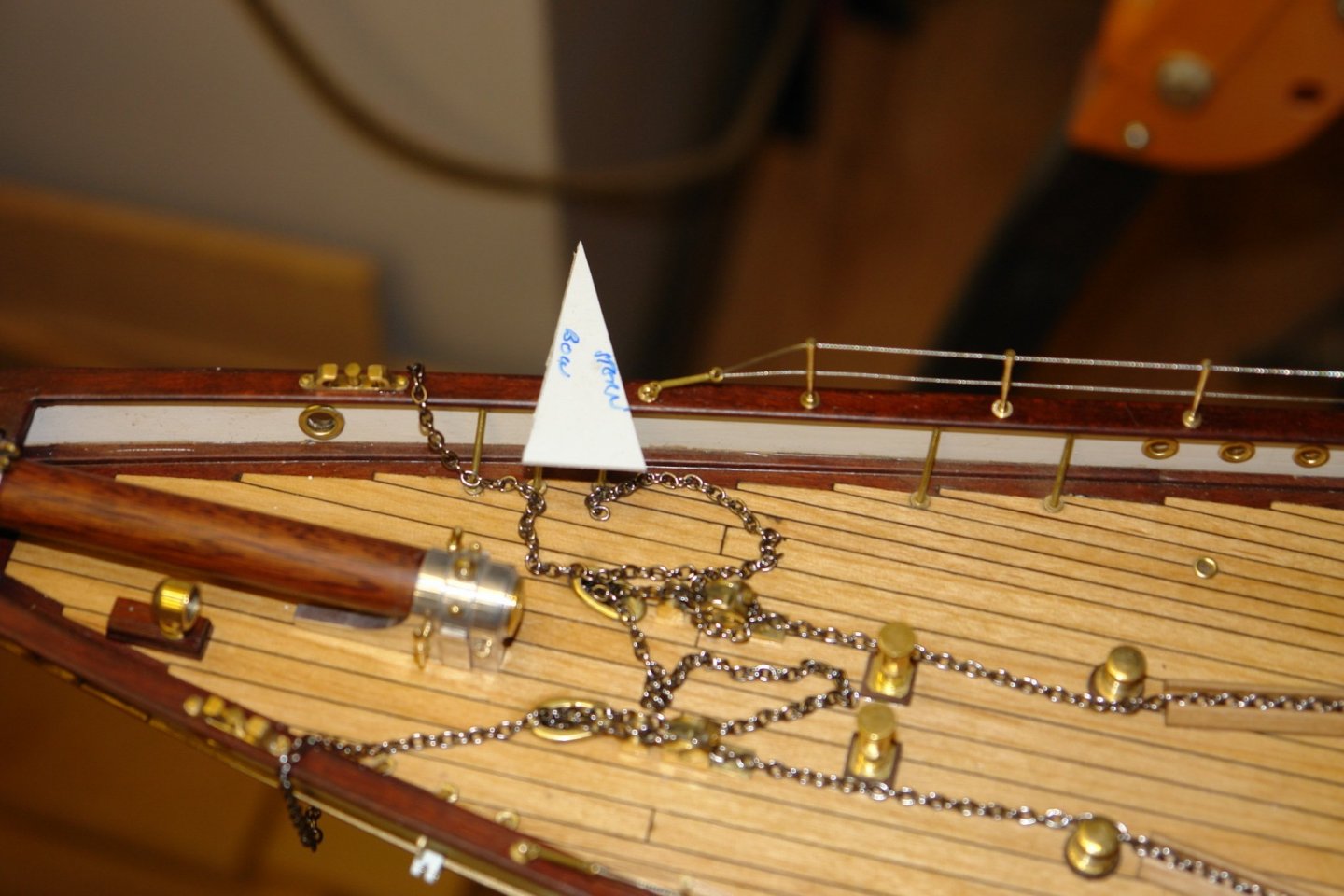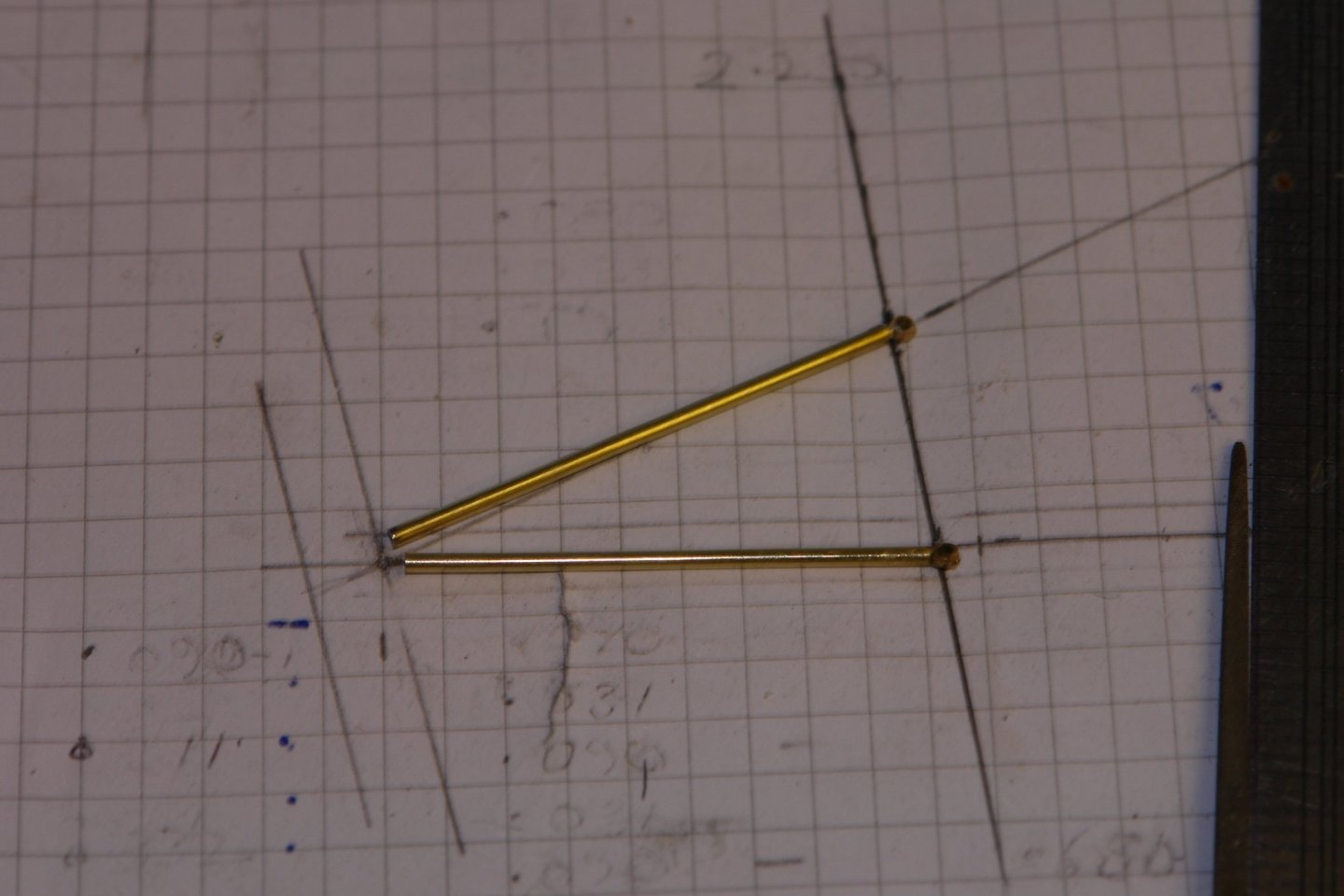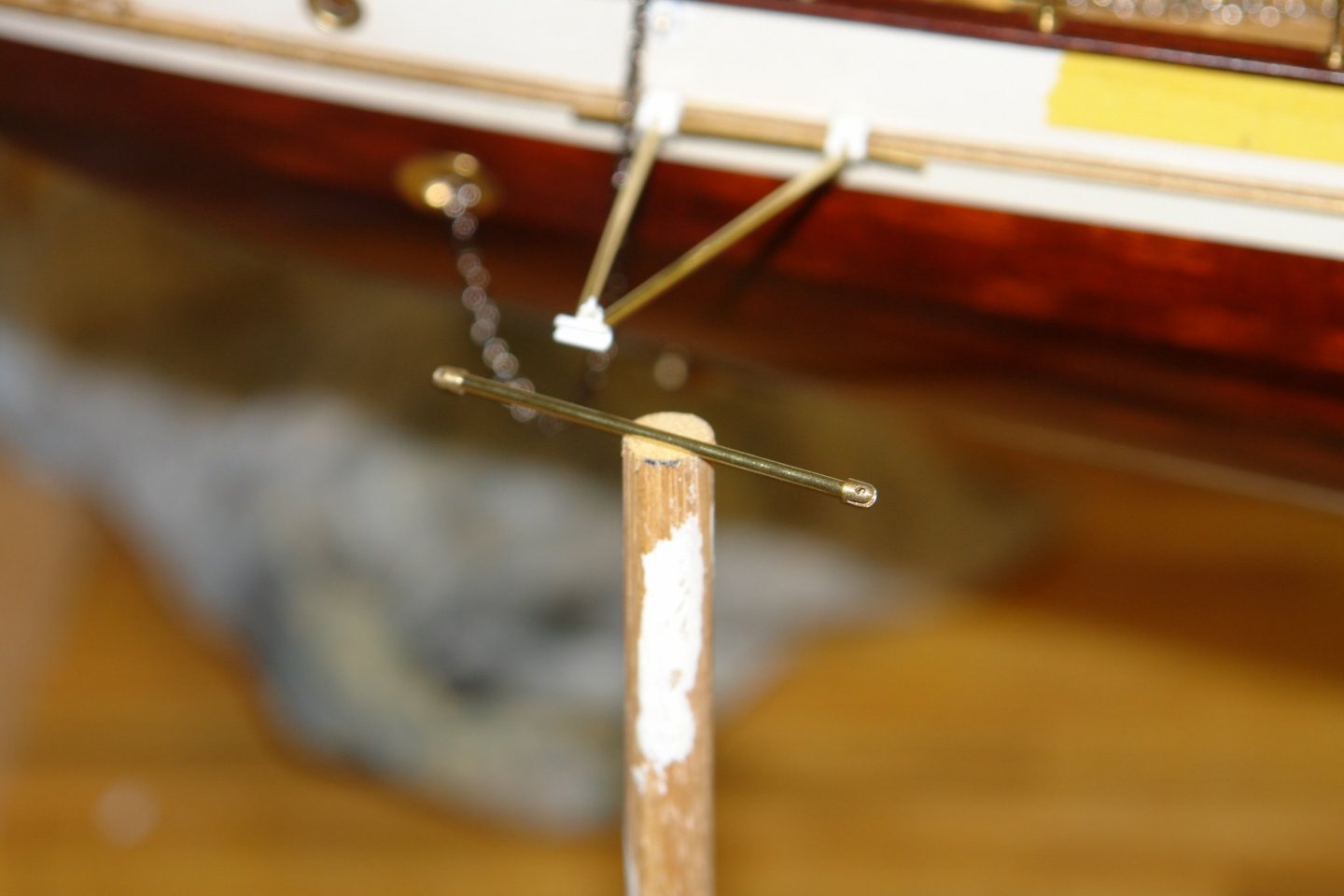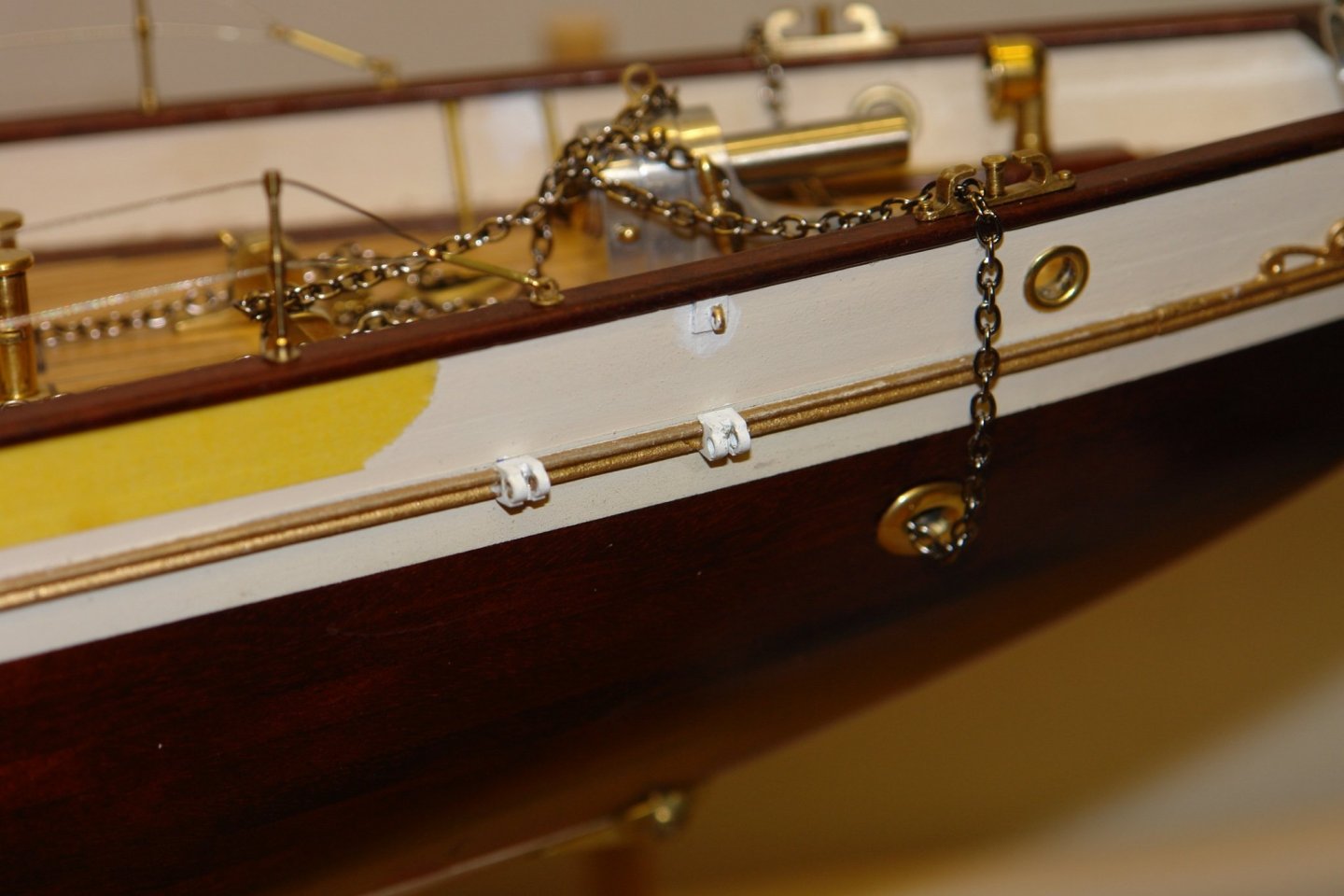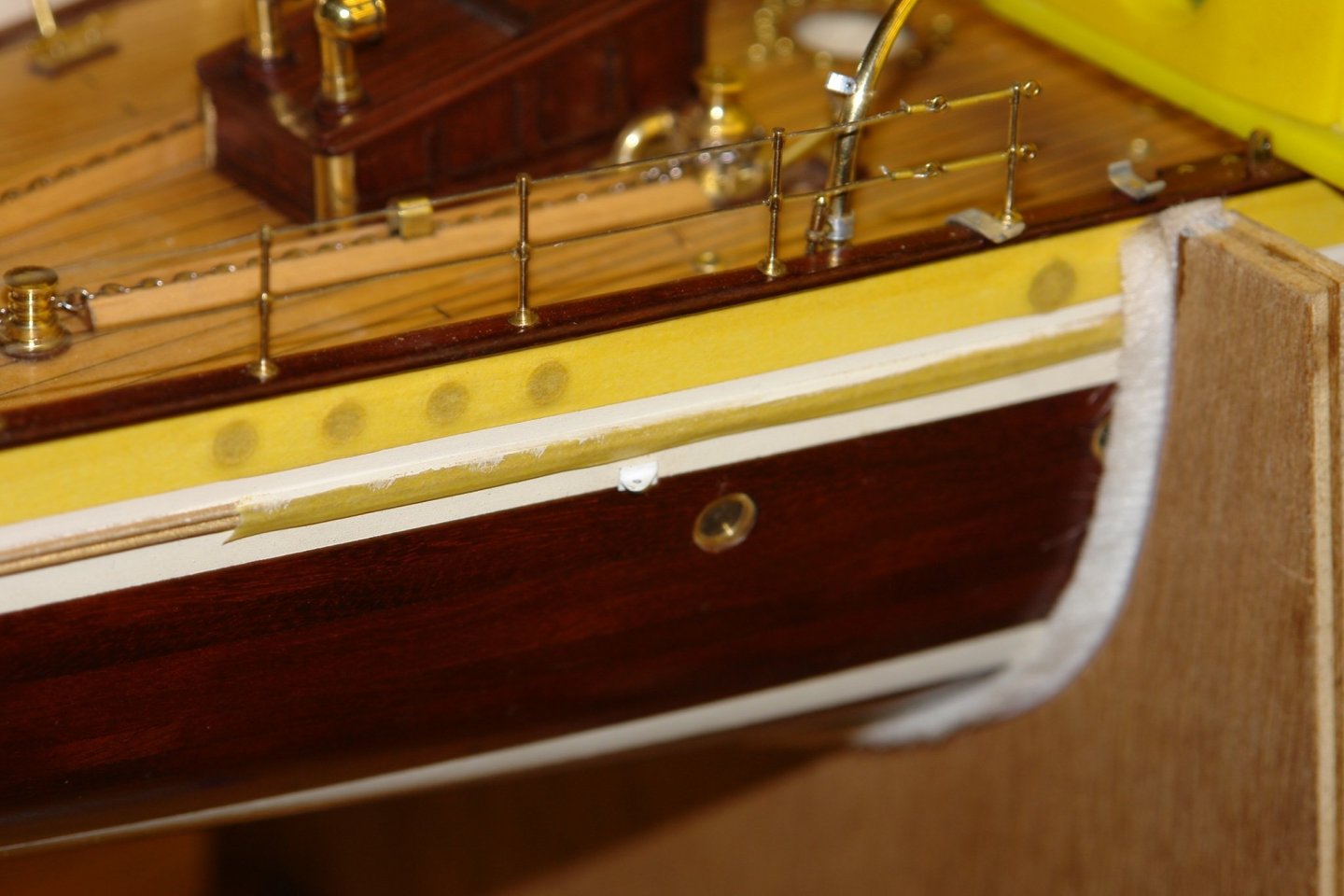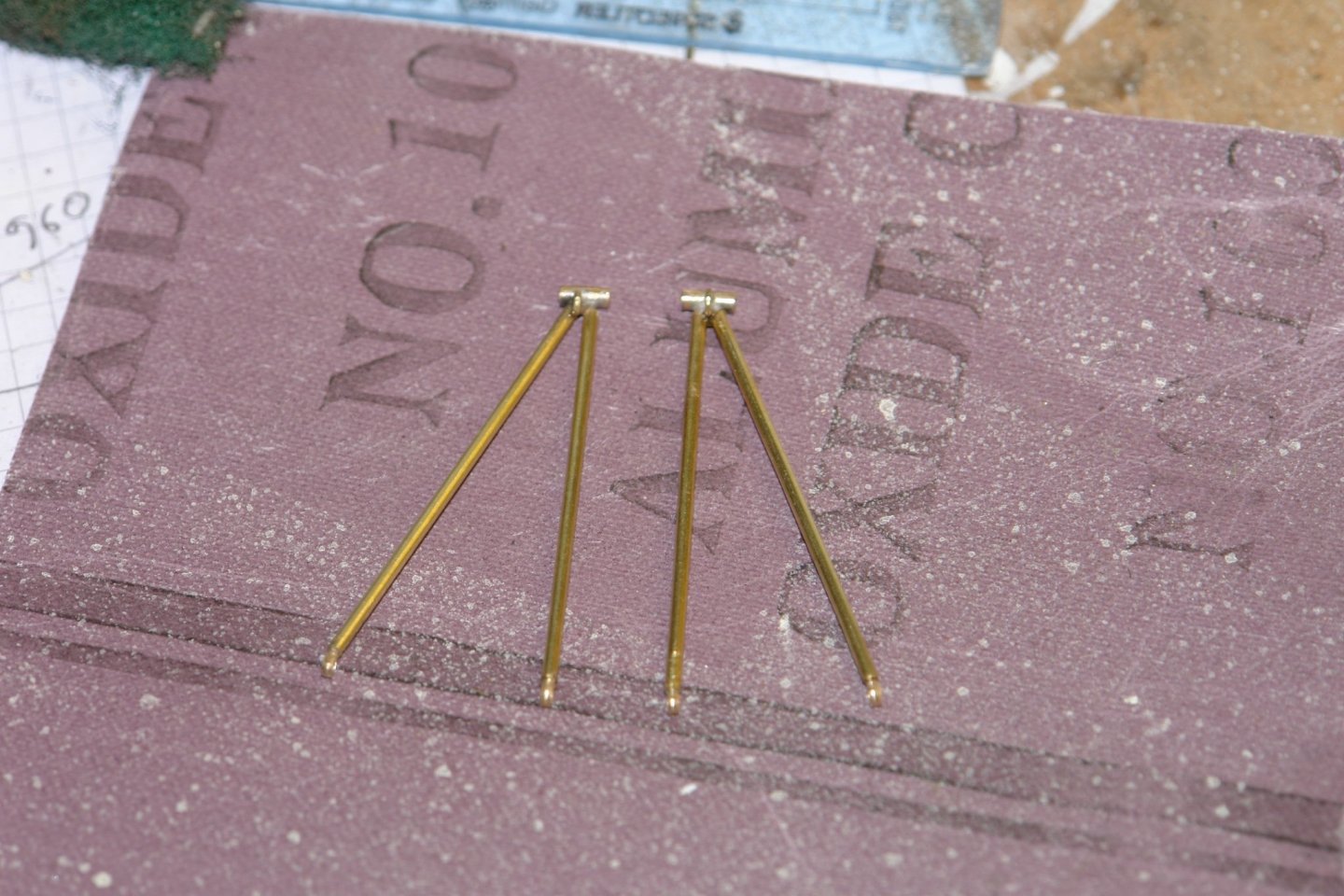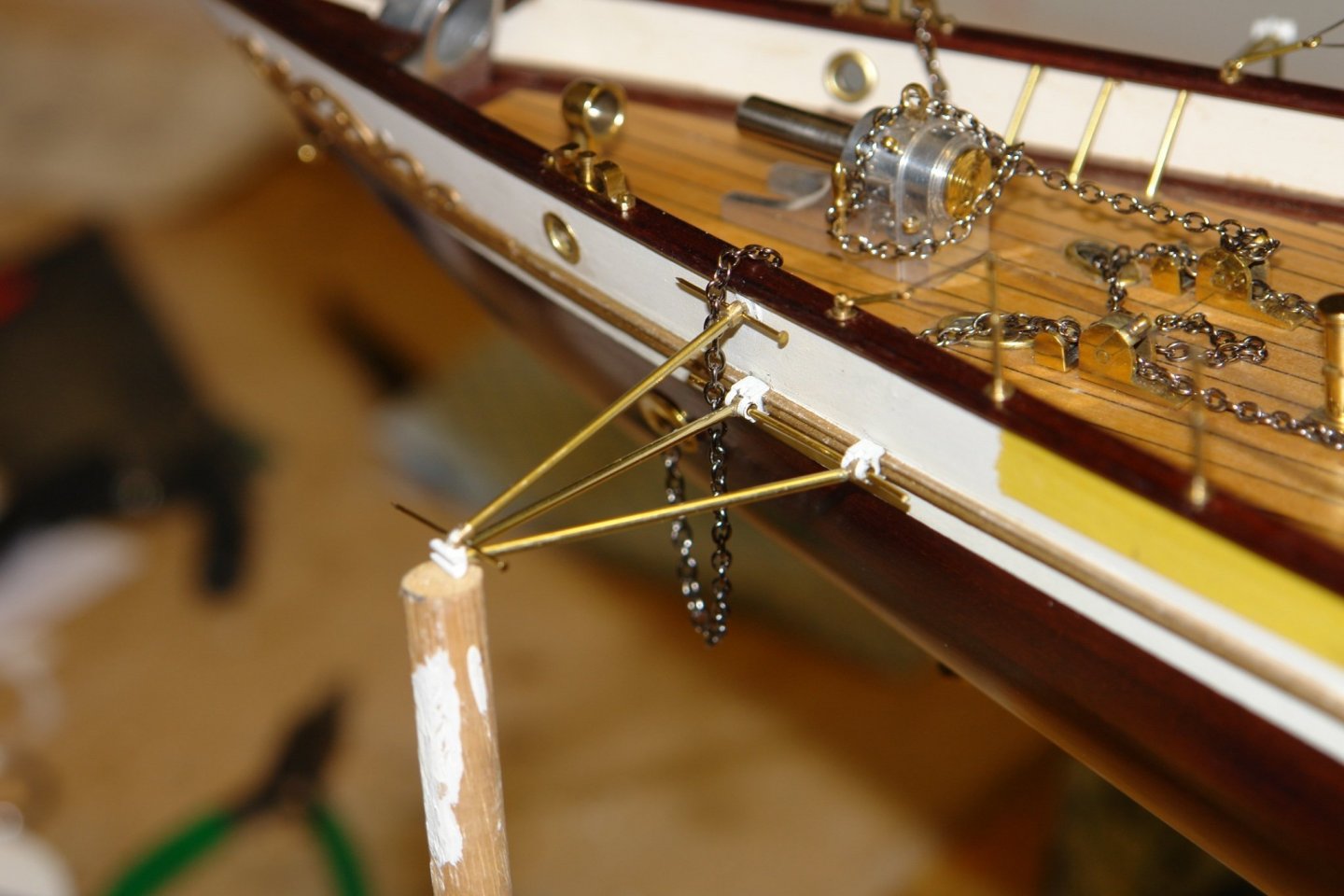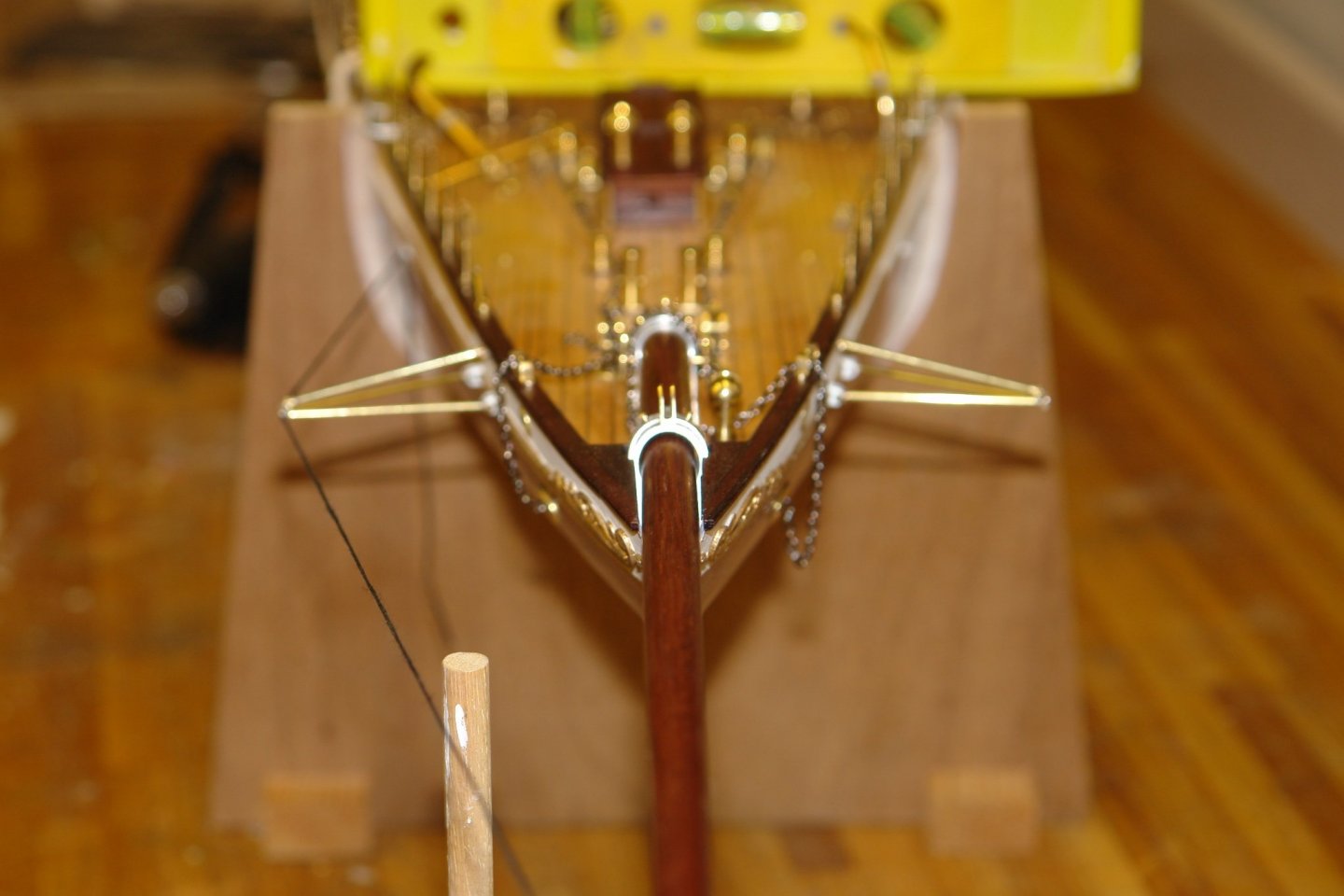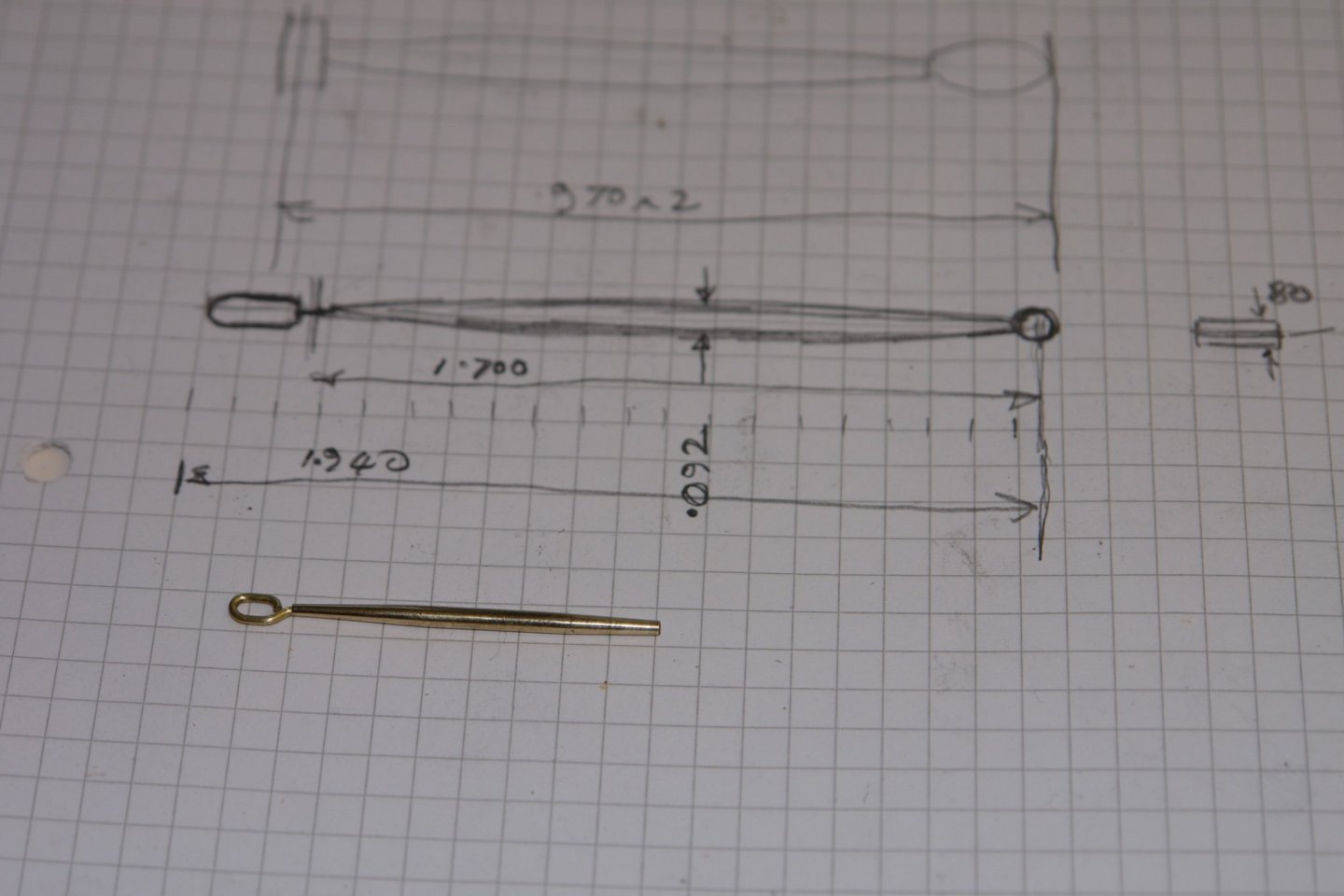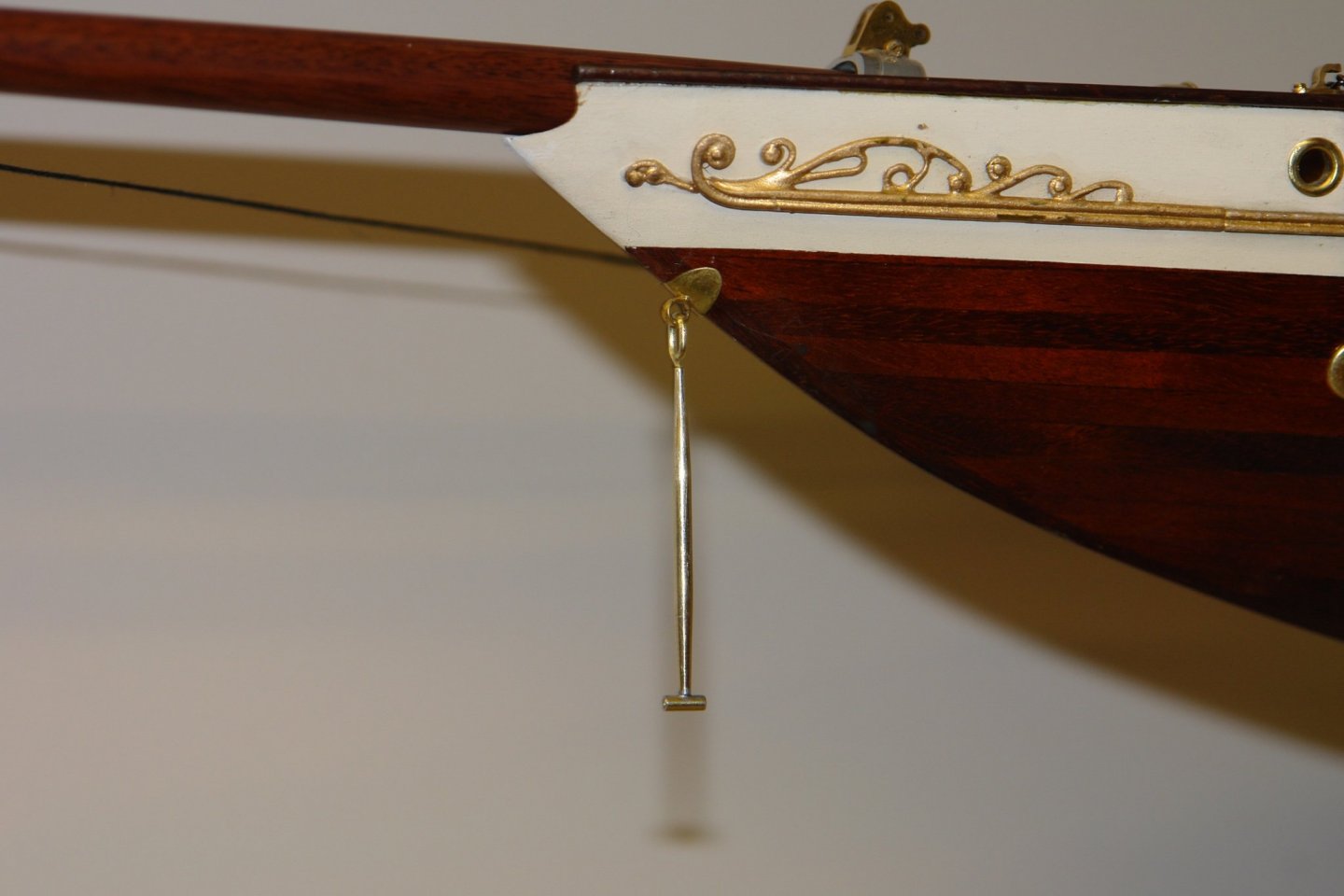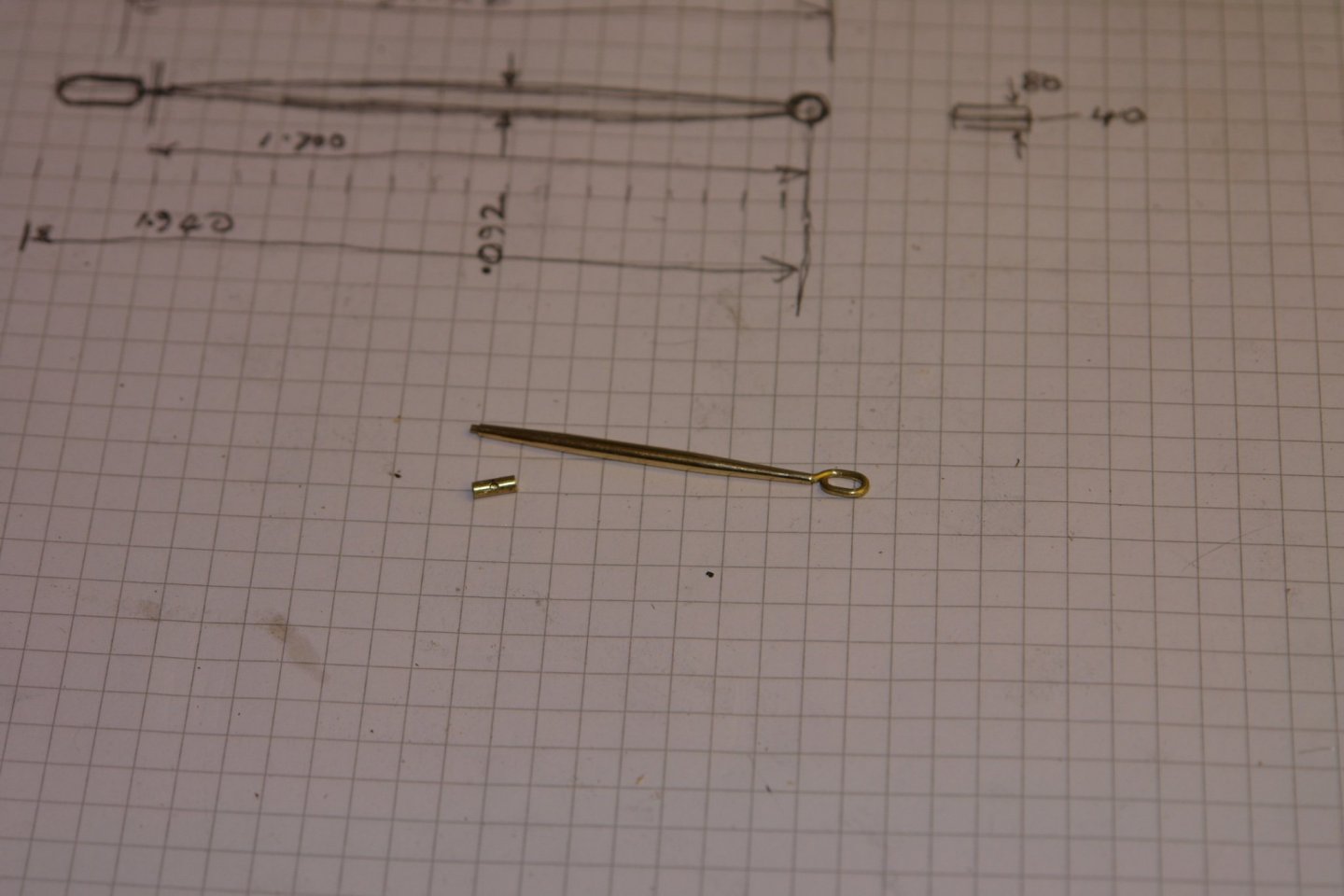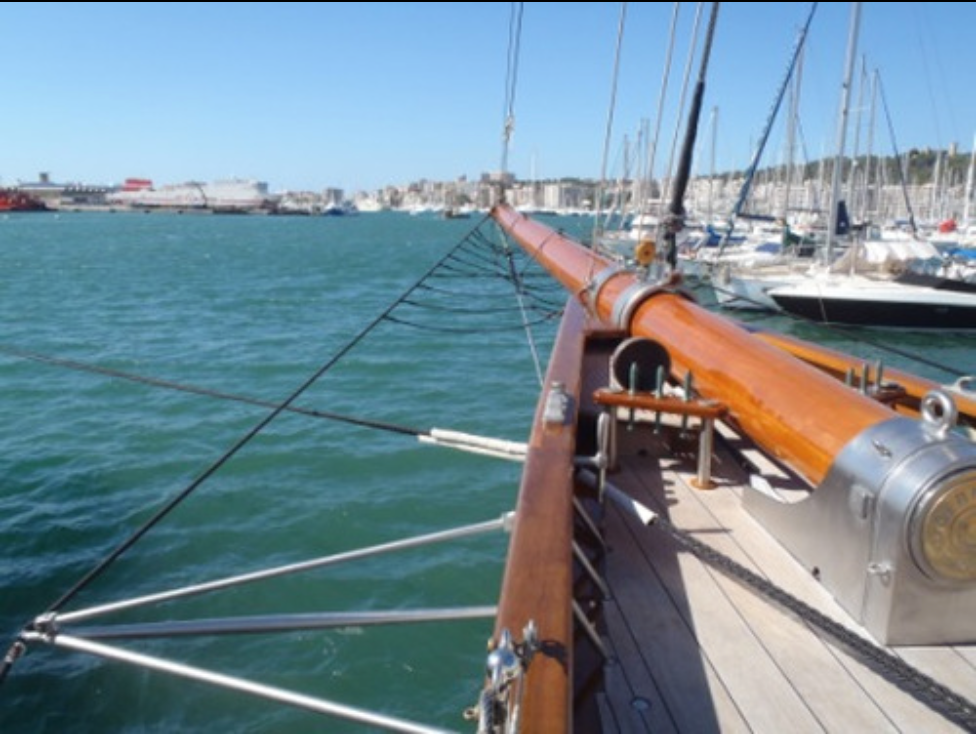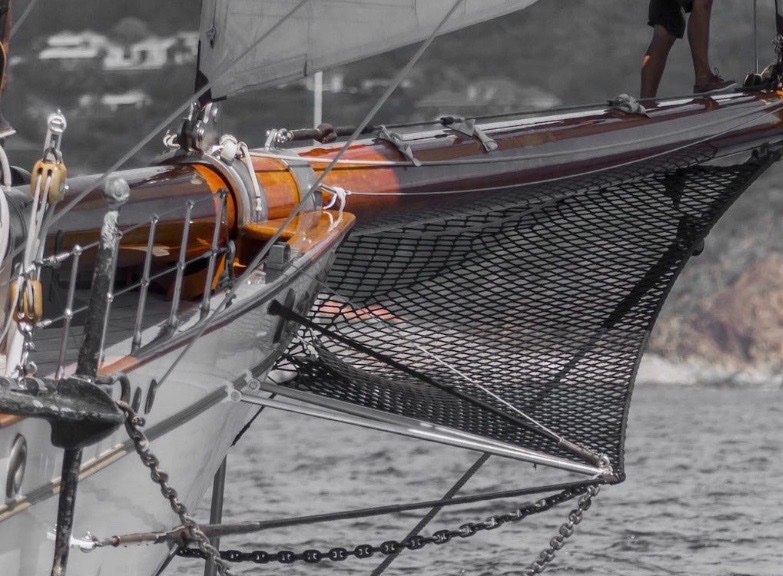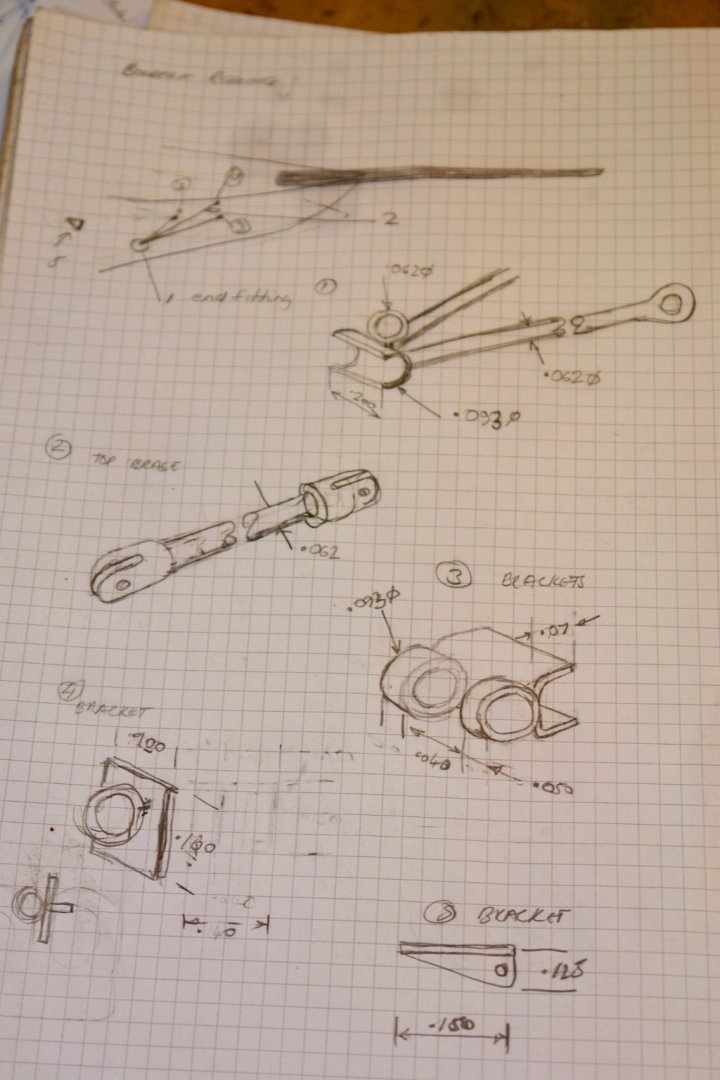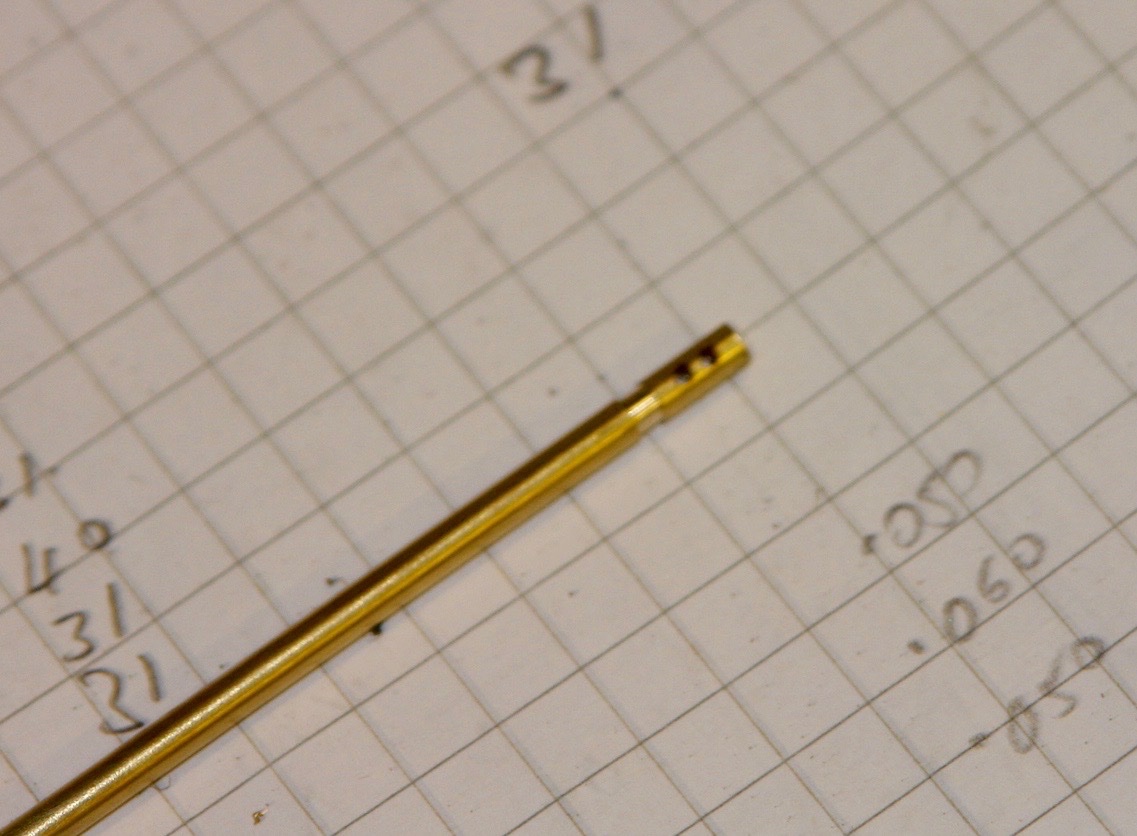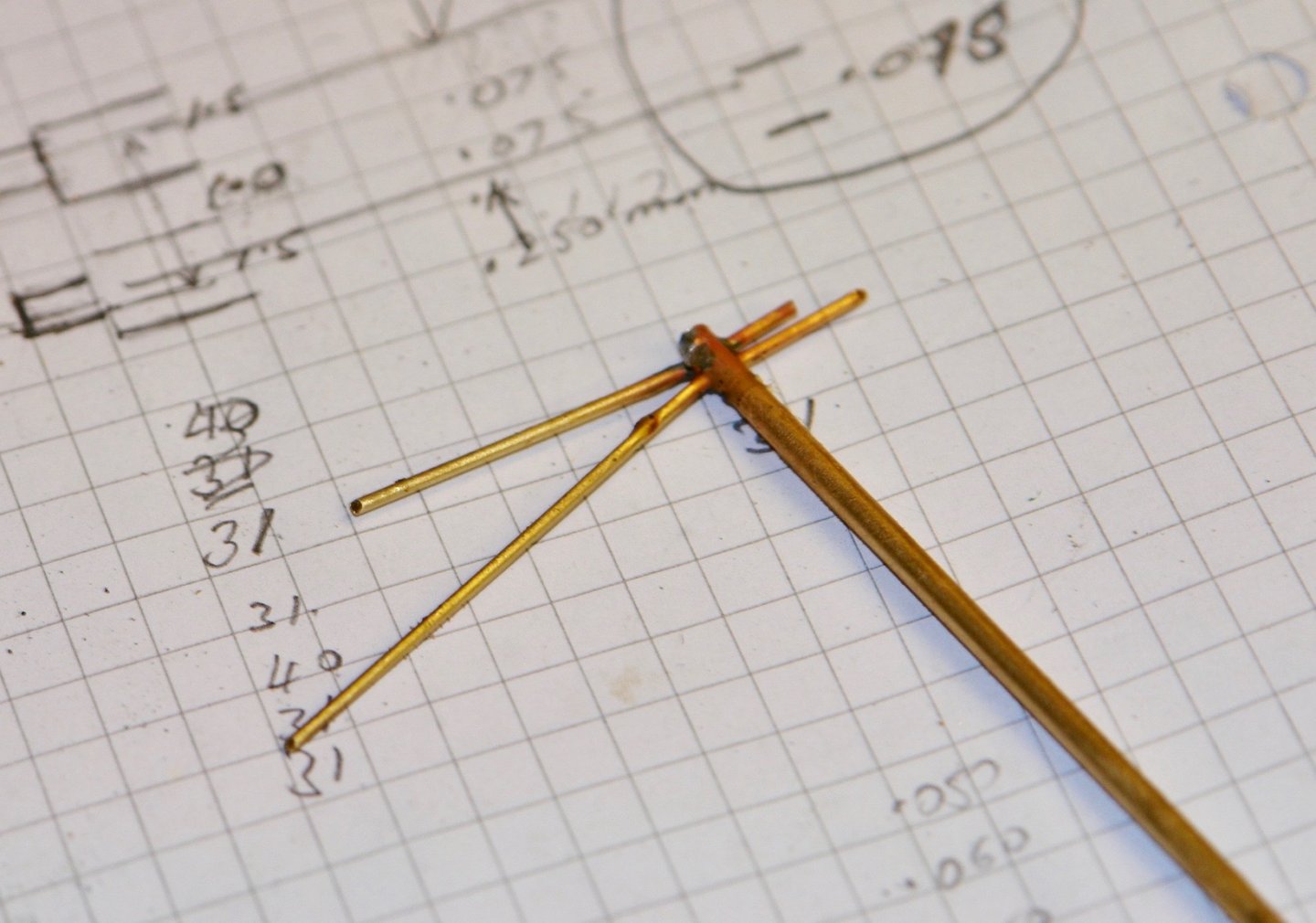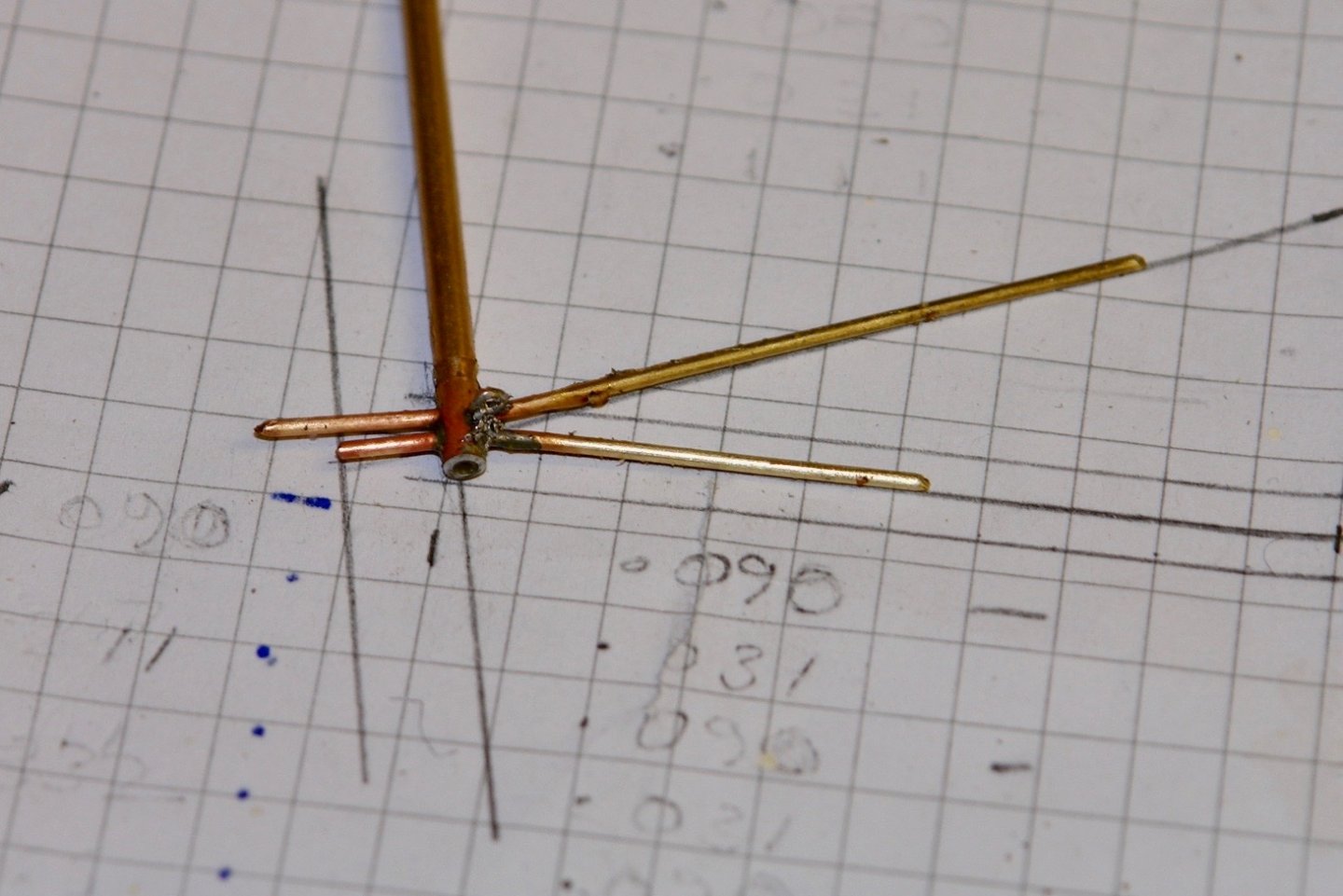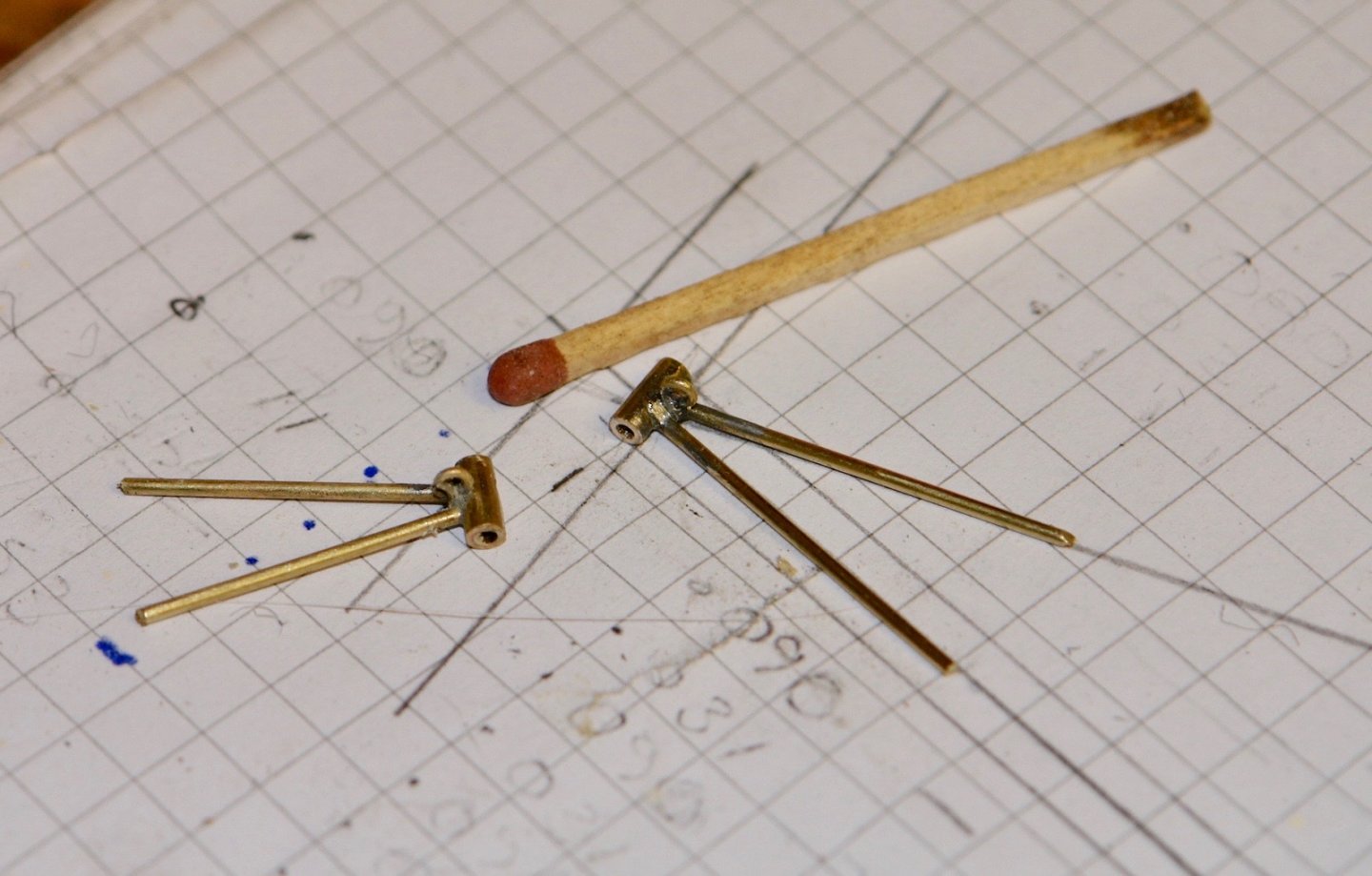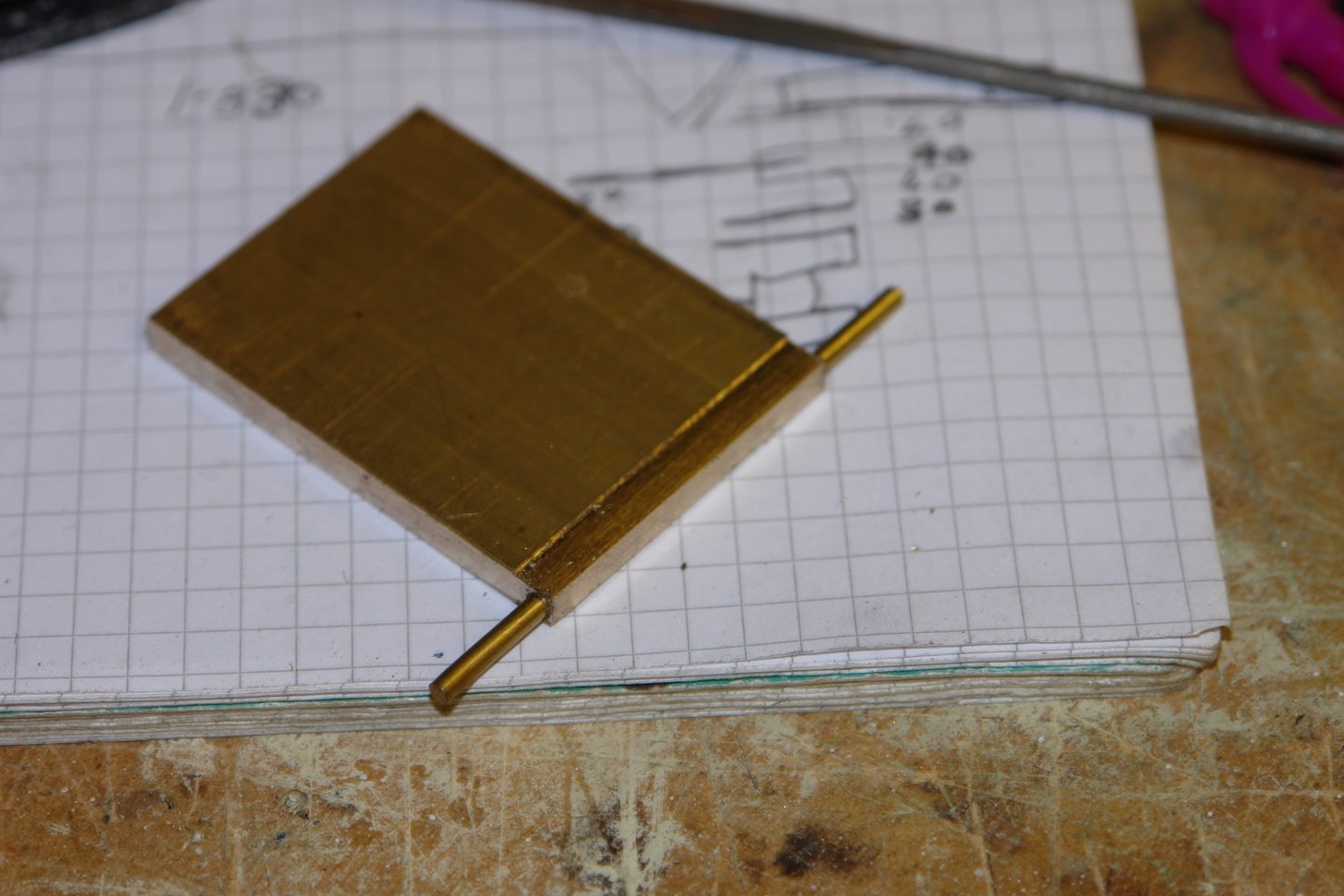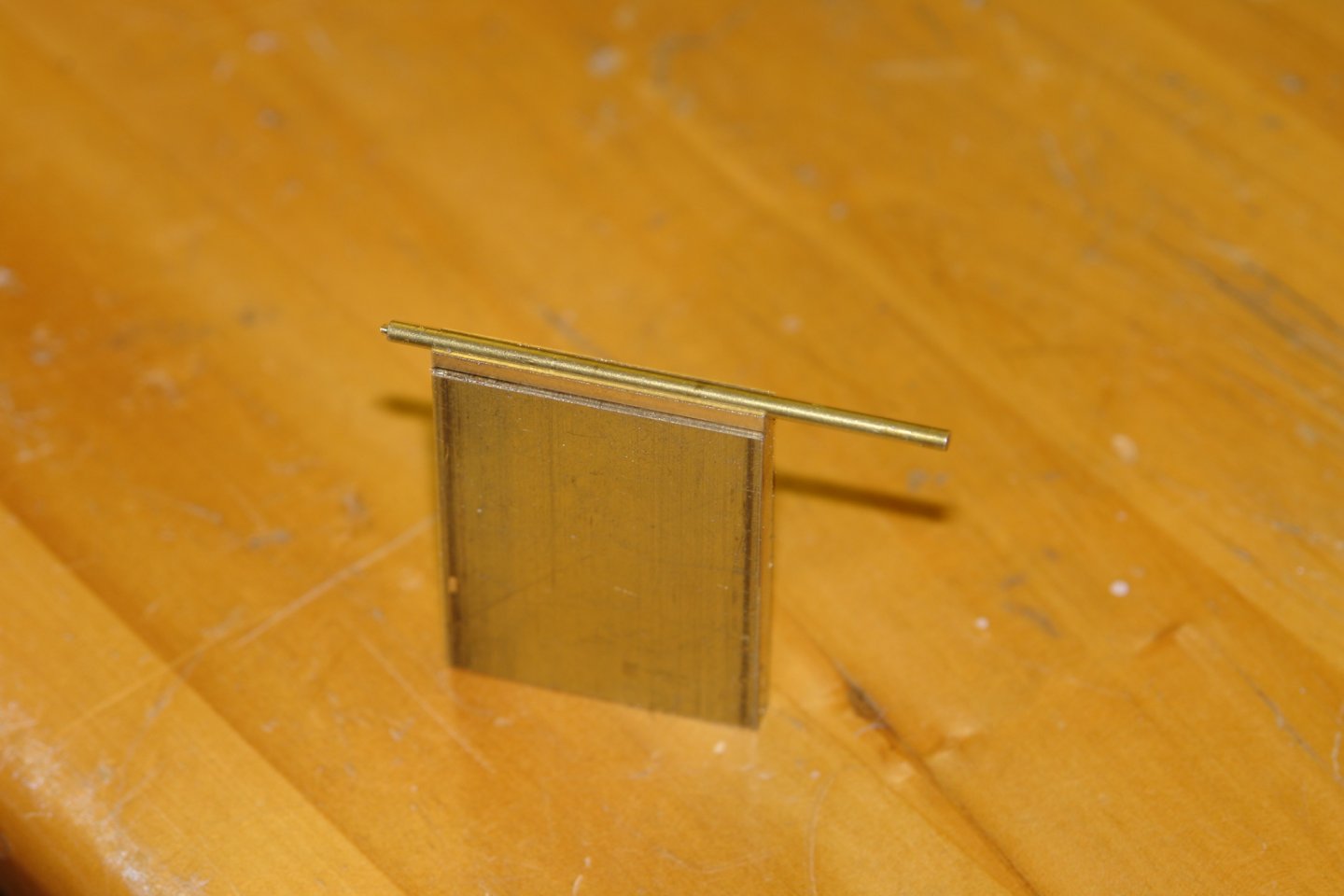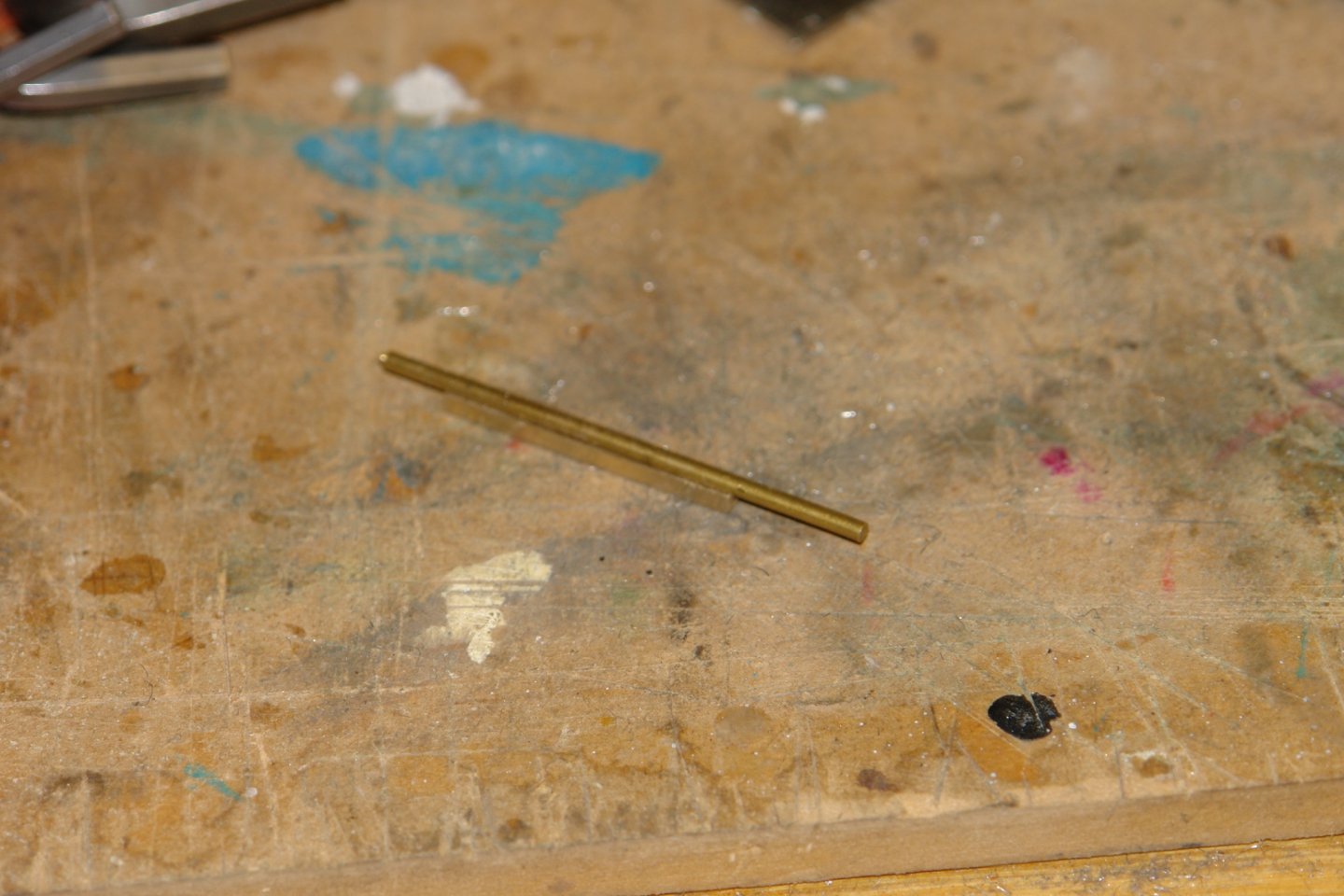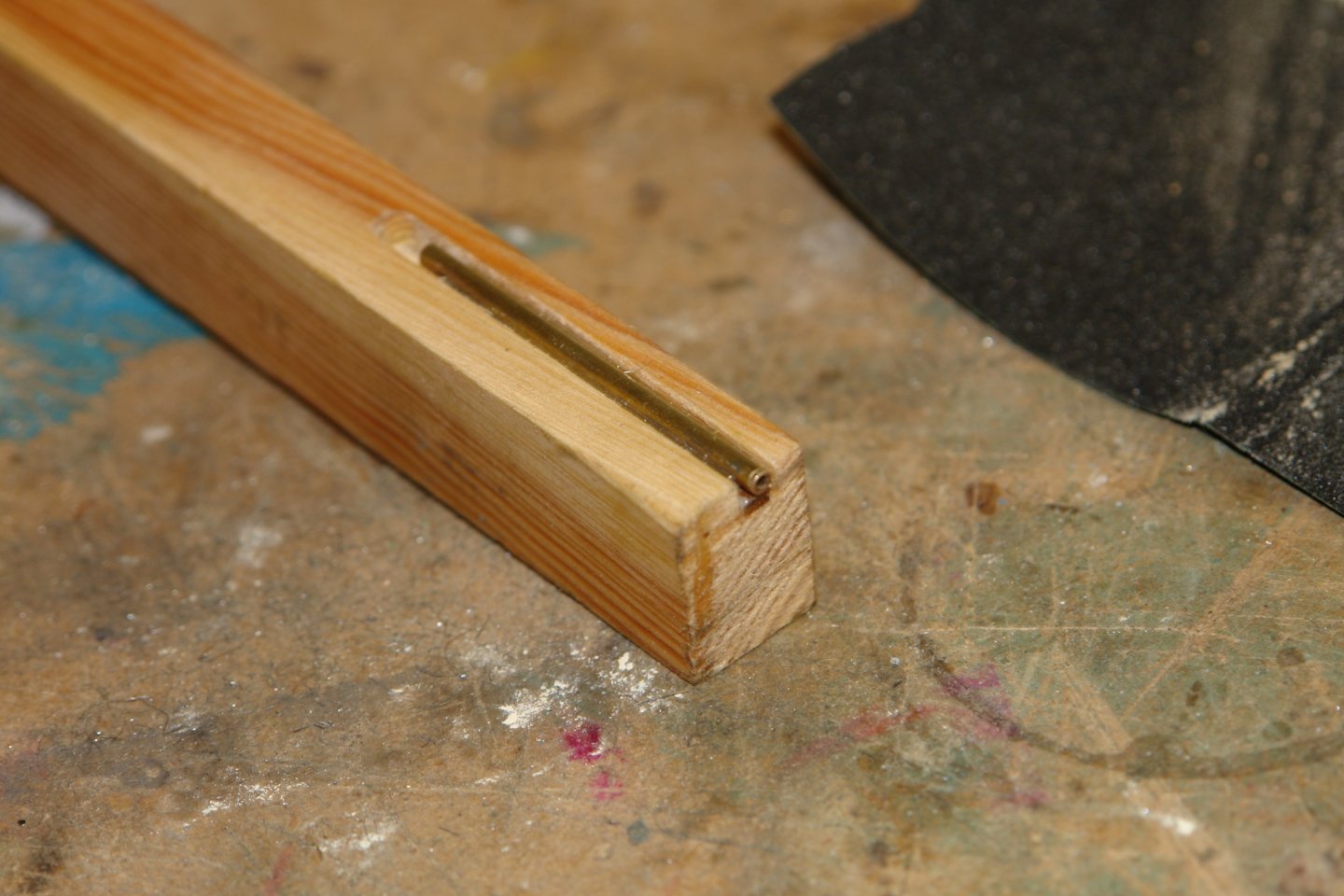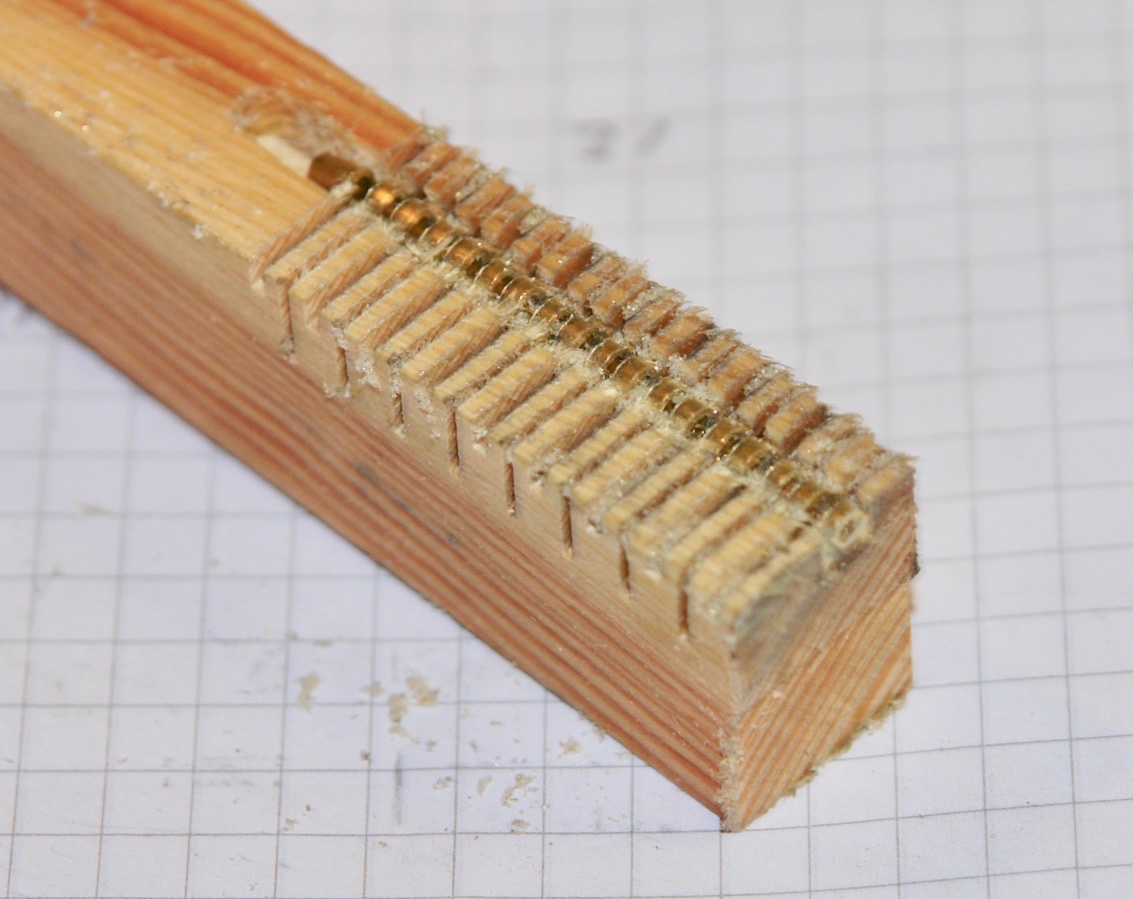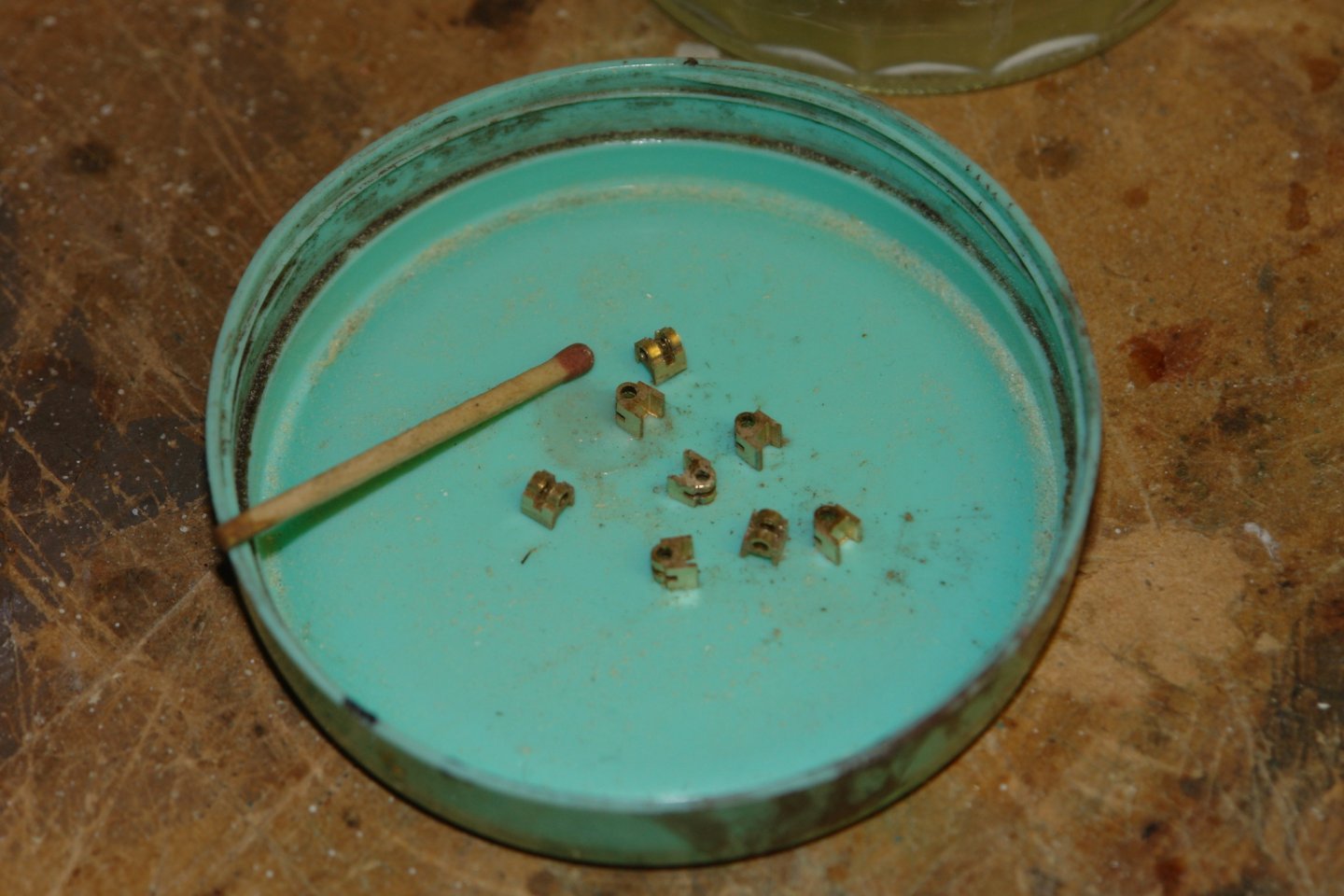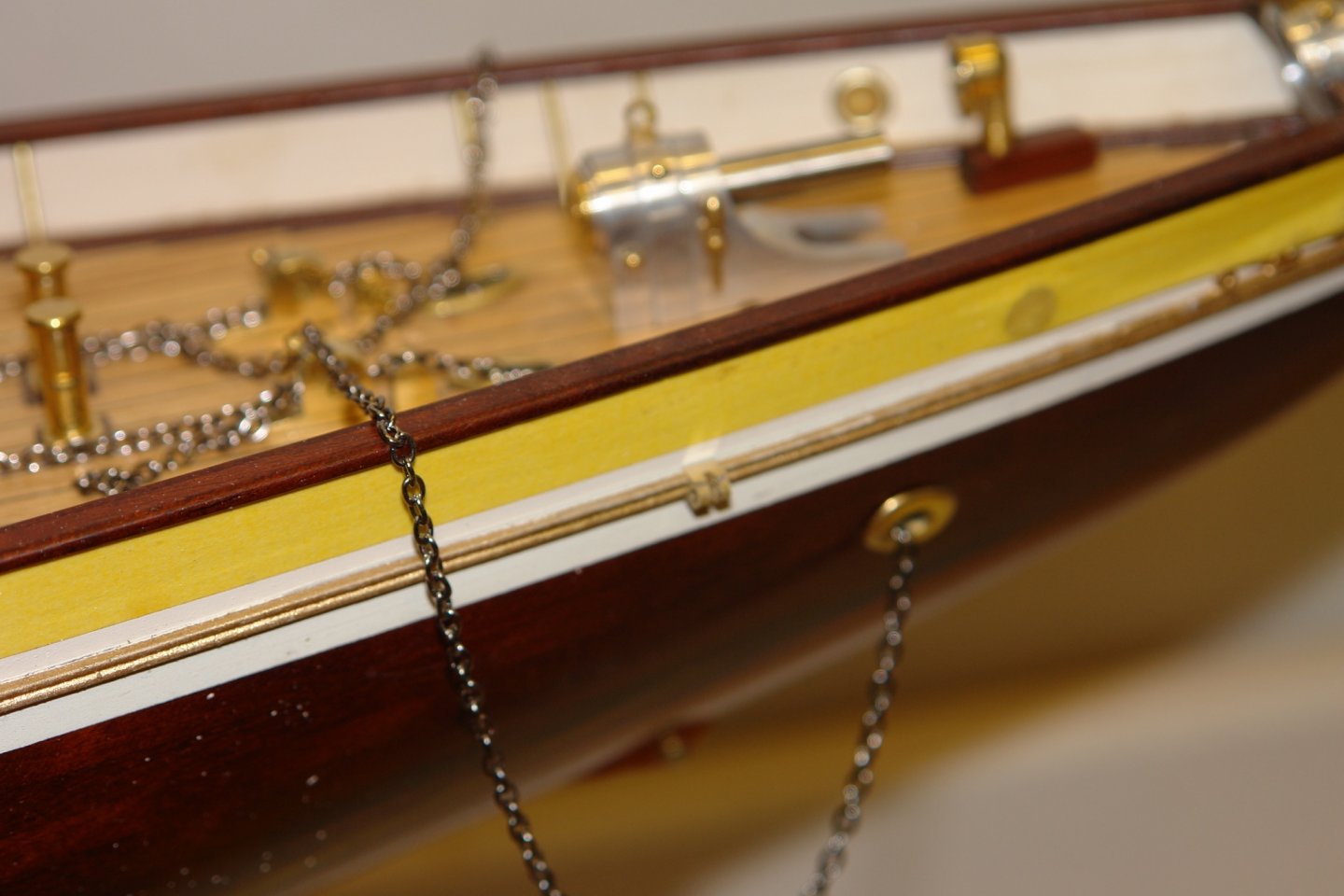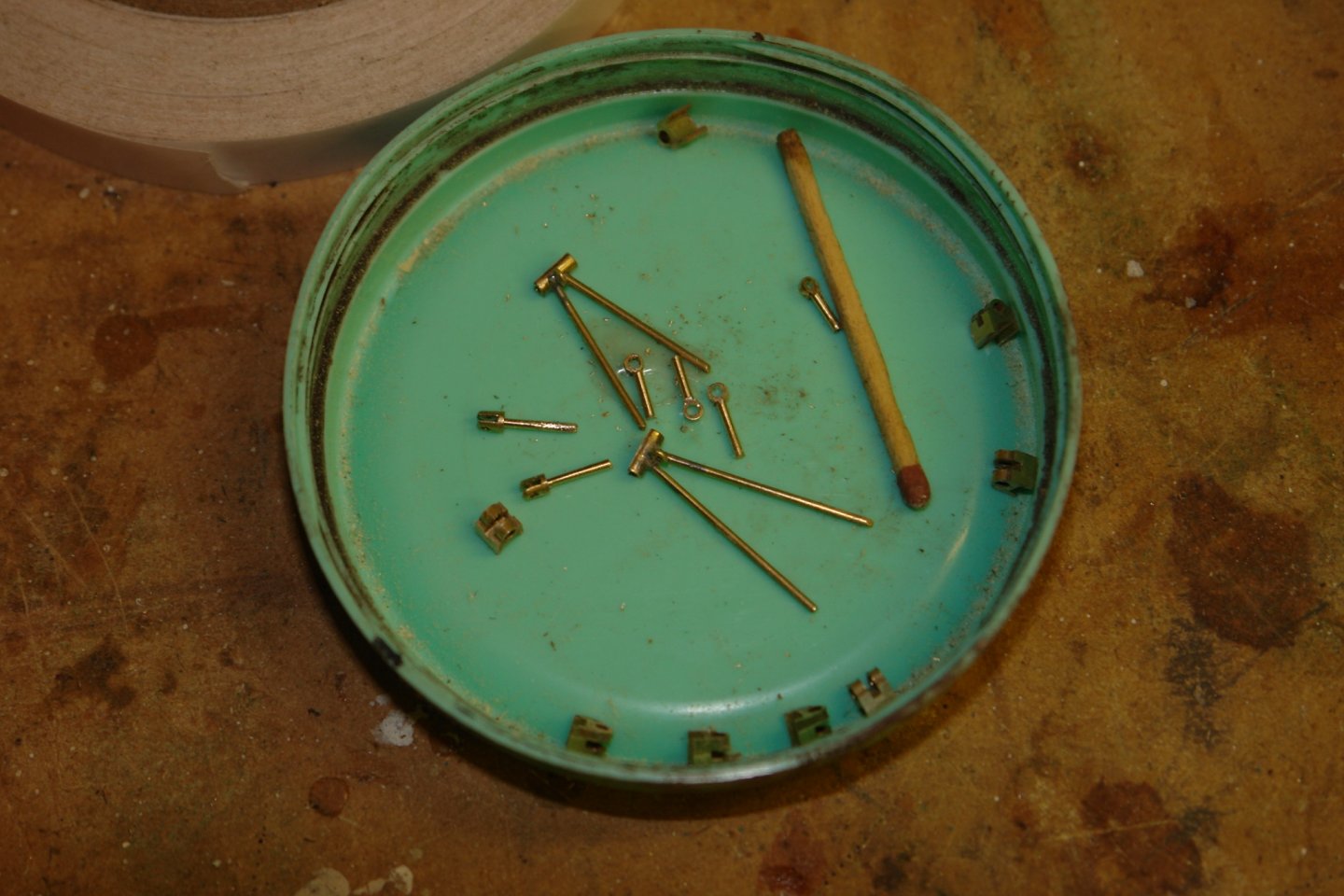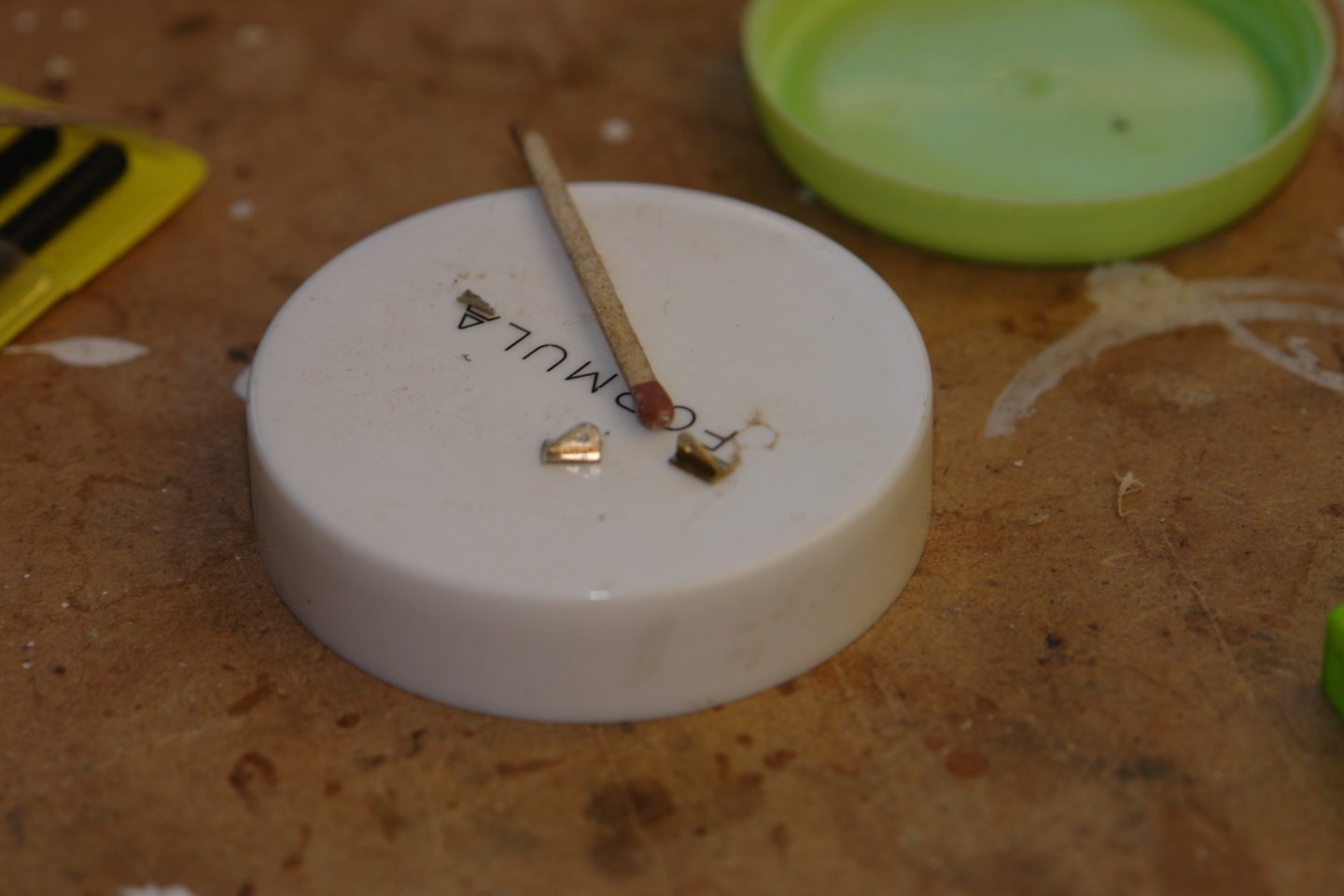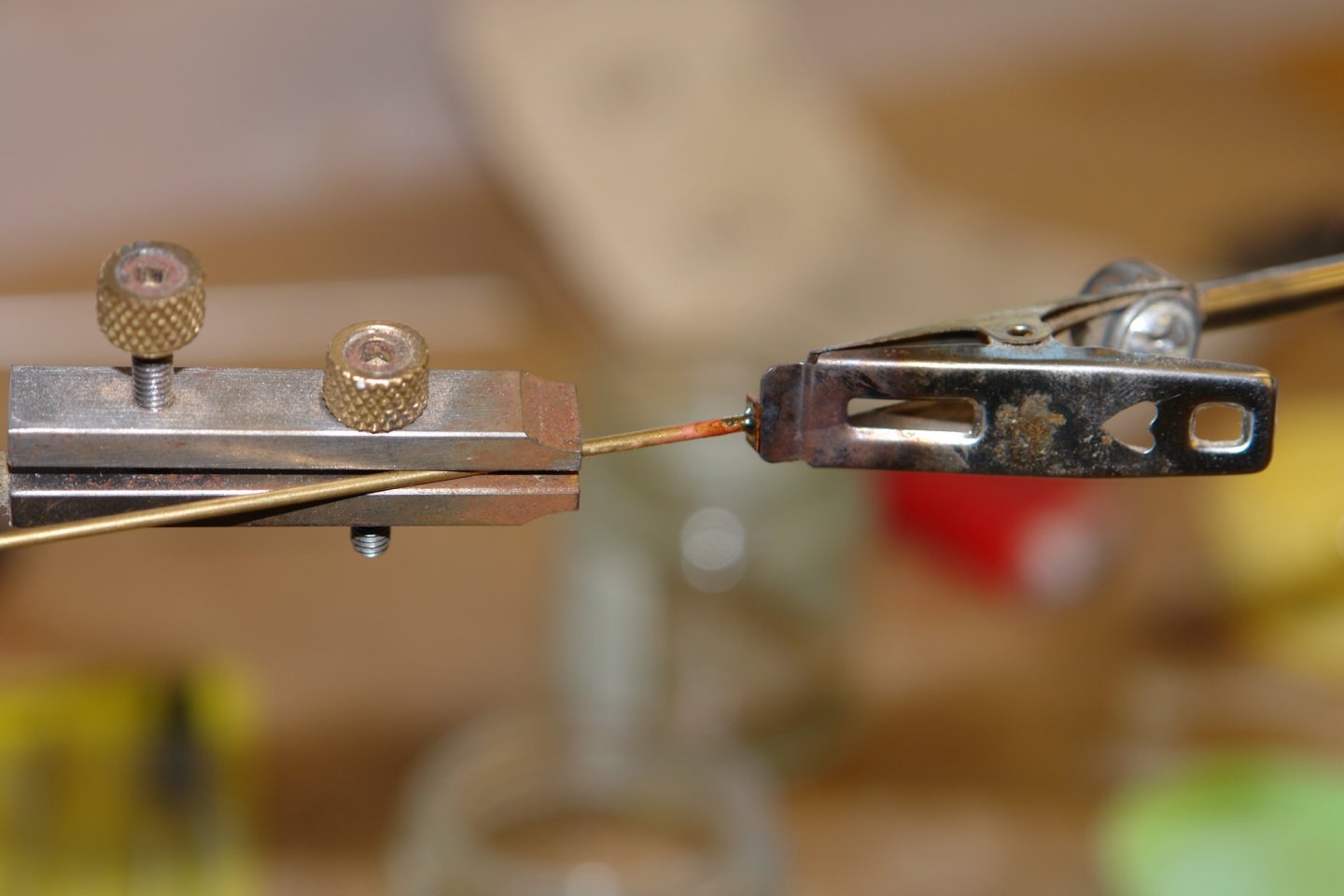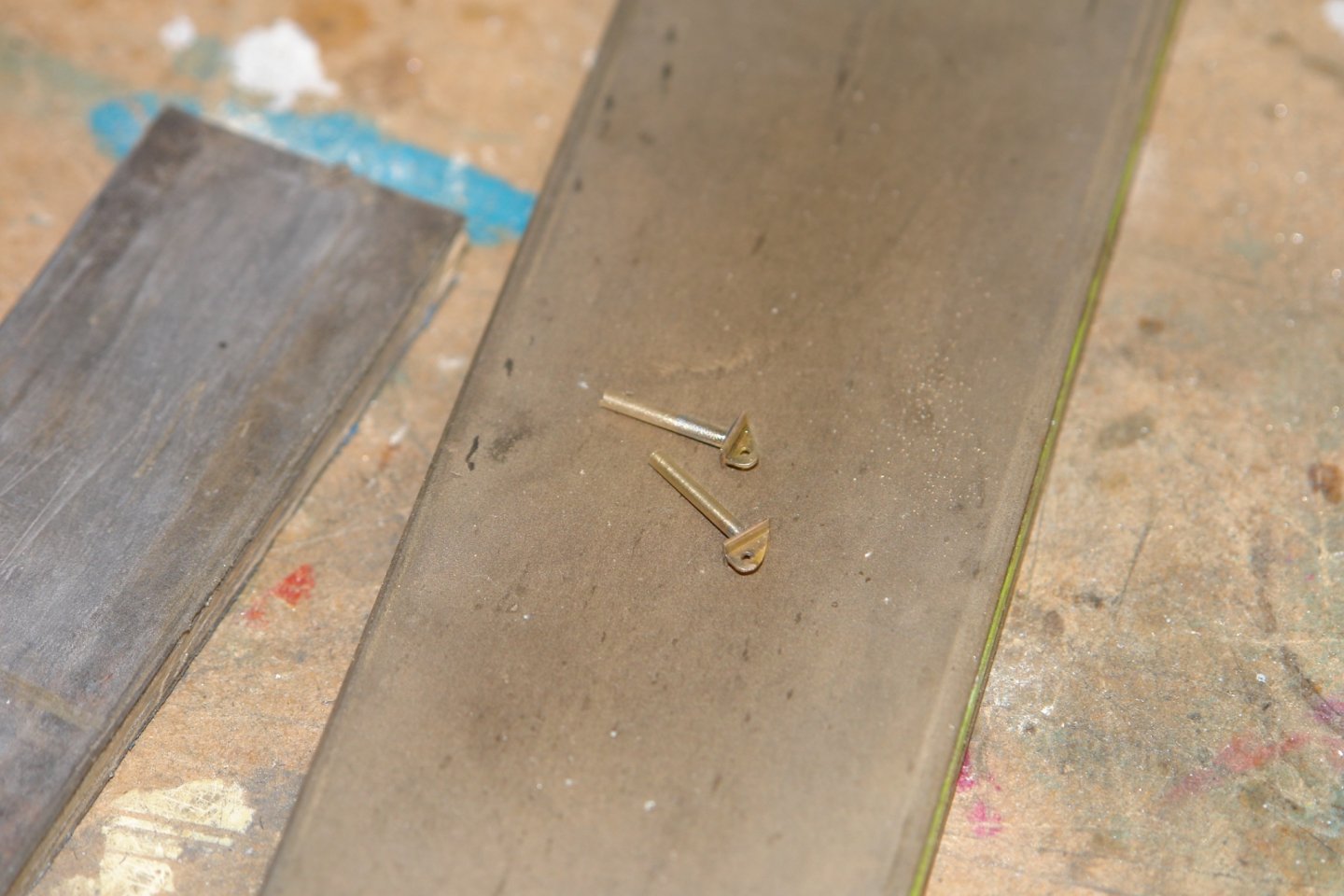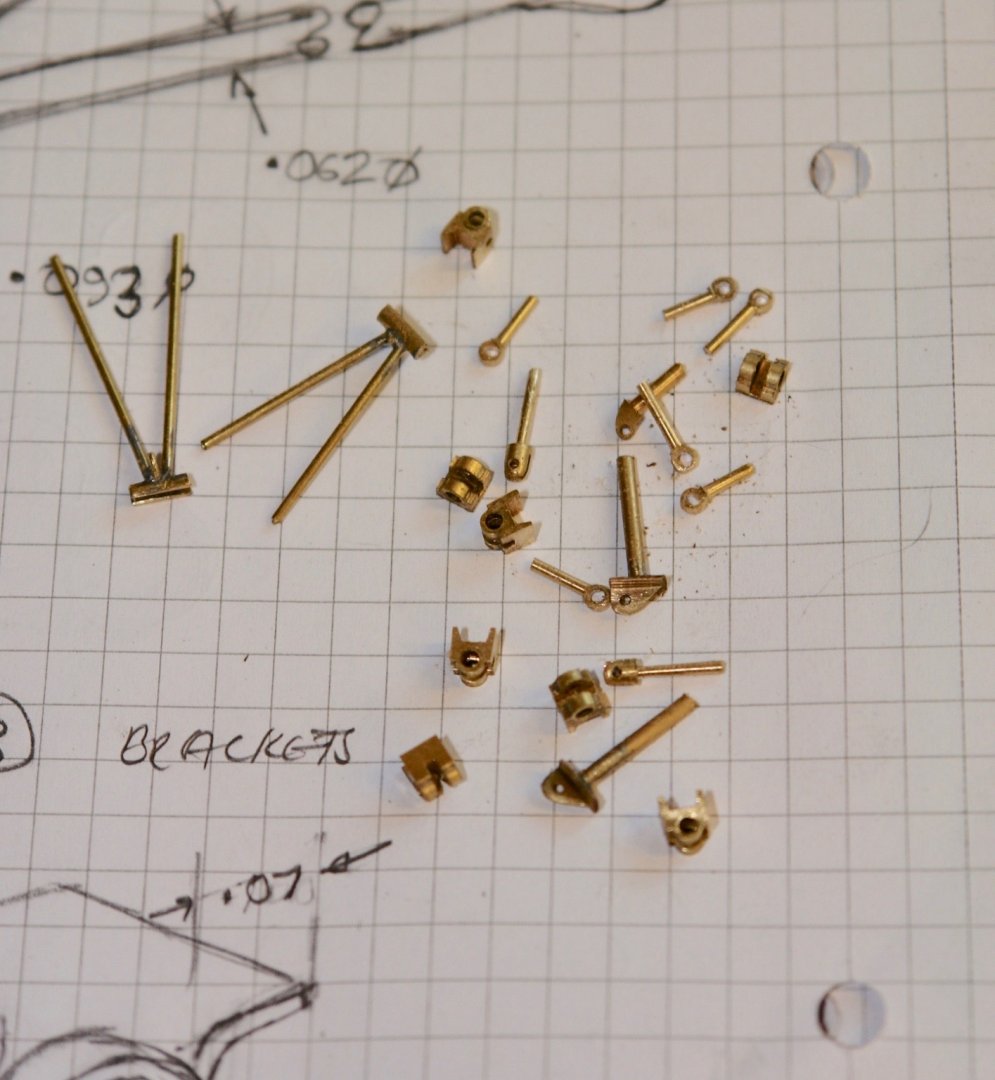-
Posts
3,946 -
Joined
-
Last visited
Content Type
Profiles
Forums
Gallery
Events
Everything posted by KeithAug
-
Certainly one of the most unusual ship models I have ever seen ( and very nicely executed) . Moving round the harbour in a stiff breeze must have been a truly interesting experience.
-
Valeriy - such wonderful work - I think you may be making your parts look better than the originals.
-
Well that was a long summer shipyard shut down. I sort of got distracted into reconnecting with family and friends and that together with a backlog of outdoor tasks kept me out of the workshop. While summer continues to hang on the days are starting to feel a bit autumnal and the winter building season has therefore opened. I recommenced by sorting out the jib stay outriggers. I cut a card triangle to the plan shape of the outrigger and marked up the hull position using a laser level. I transferred the outrigger shape to paper and used this to size the struts and get the angle correct. The soldering job was a bit better than the last effort. I glued the outrigger mounting brackets to the hull in the previously marked positions. To get the outriggers mounted horizontally I made an end support from a piece of dowel. I then sized the top arm of the tripod to maintain the correct angle of the outrigger. The bracket which holds the aft end of the jib stay to the hull was then mounted. Small pins were then turned to fasten the outriggers to the hull. To test the run of the stays I fixed a temporary line. The net job was the dolphin striker. The stem was taper turned from .093" brass rod and this in turn was soldered to a short length of tube to take the lower jib stay. The upper end loop was bent from wire and inserted into an dial hole drilled in the stem. The hoop was then attached to the hull mounted bracket (installed 2 years ago). How time flies. I now need to catch up on all your progress during my absence.
-
Well worth a visit Eberhard. It was very quiet when a group of friends and I went about 15 years ago. She was in the early stages of preparation for display and a very obliging volunteer took us on a very detailed tour of the engine room -- quickly curtailed when we realised the restoration crew were hacking lumps of asbestos off the steam pipes. Clearly asbestos regulations are not always the same.
-

HMCSS Victoria 1855 by BANYAN - 1:72
KeithAug replied to BANYAN's topic in - Build logs for subjects built 1851 - 1900
All looking very smart Pat. I enjoyed magnifying the deck photos and taking a self guided tour. Nice little bell, I guess it does not have striker at that scale?- 1,002 replies
-
- gun dispatch vessel
- victoria
-
(and 2 more)
Tagged with:
-
A remarkable amount don for just a year - compared to my sometimes pedestrian progress. The hull painting turned out rather well and overall she is looking quite trim - probably a lot more so than the original. I continue to find this vessel most interesting. Condolences on the loss of your Father in Law.
-
Nice technique for the blocks Eberhard. The most rewarding part is finding a way of doing the seemingly impossible.
-
Hi Keith - I loved catching up on the block / shackle debate. I recall looking at some very detailed work (through a microscope) in the gold room of the Hermitage Museum in St Peterburg. The very knowledgeable guide pointed out that the work was so fine it could only have been done by children because of the visual capability they posses. I think you need to get younger or recruit some grandchildren.
-
Beautiful detail druxey. Wish I had a good watchmakers lathe.
- 433 replies
-
- open boat
- small boat
-
(and 1 more)
Tagged with:
-

Justifying the purchase of a mill
KeithAug replied to Captain T's topic in Modeling tools and Workshop Equipment
I agree with many of the comments above but here is my experience. I got my first lathe about 35 yeas ago and found it useful on both kits and scratch builds. On kits it gave me the opportunity to make better and more detailed replacements for those nasty plastic, white metal and to a lesser extent brass parts that kit providers often supply. I dint think I really needed a mill until I got one about 10 years ago. I then found I used it a lot more than the lathe. I now wouldn't be without one. I find that with a bit of imagination it makes many jobs simpler and more accurate. -
Eberhard - She did good. It is finished awaiting mounting - I will take a picture and post it.
-
For the past week the weather has been typically British as global warming has taken a few weeks off. The upside is that I ventured into the workshop. Mental note - I must keep a better record of where I am up to. I decided to make a start on the tripod outriggers for the jib stays. These are a complicated little job consisting of small brackets and thin struts. They have to be pretty accurate as dicrepancies easily show in the run of the stays. I decided to include a degree of adjustment to ease setting. A couple of pictures show what I am trying to make. I did a bit of sketching to sort out how I was going to make the various bits. To achieve the adjustment I decided to form the struts out of thin wall tube with wire rod sliding in the bore.The tube was .048" OD x .040" ID. I started with a .093" tube that would ultimately form the "C" shaped outer end and drilled this with 2 .040" cross holes to take the outrigger rods. Into this tube I soldered the .040" rods. I then formed the eye to take the outer end of the upper strut and soldered this on to the tube between the two rods. (Awful soldering, must do better). The brackets started life a piece of brass sheet .125" thick. This was drilled along one edge with .093" hole to take a brass tube. The hole was then cut along the drill centreline to from a half circular channel into which the tube was soldered. This was then cut off to the required height of the bracket before inverting it and cutting a square channel along the base. I then cut the tube down to the length of the channel and glued this into a slot in a piece of wood. The slot depth was equal to the height of the bracket. I then did a series of accurate cross cuts of different depths to form the lugs and to separate off the brackets. The slots were cut on the table saw. I needed 6 brackets so made 8 - I sometimes learn from my mistakes. The brackets were glued to the hull. The reason for the base channel can be seen, as 4 of the brackets fit over the rubbing strip. `The other 2 brackets fit flush to the hull so here the the "wings" were removed. I also manufactured a number of eyebolts by the previously described method, together with other U shaped brackets on mounting spigots. I also needed a couple of off-set brackets for attaching the ends of the stays to the hull. These were also soldered to mounting spigots. Finally I had a kit of parts (excluding the strut tubes). By this stage I had cut off the outer end tube to from the "C". All well and good you might think, but that would be incorrect. The angle of the struts proved to be wrong and the end "C" tube didn't sit properly against the run of the stay. They will have to be remade, but at least I will be able to correct the bad solder job.
-
Its a woman thing, they all seem to think we never grow up........ now where did I leave my clockwork train set?
-
Tom, I have always called them turnbuckles, all my sailing friends call them the same except for those who only sail for the gin and rum. They don't seem to have very much sailing terminology!!!!!! Pat, Keith, FlyingFish, Vaddoc - thank you for the comments - I must find time to catch up with your builds.
About us
Modelshipworld - Advancing Ship Modeling through Research
SSL Secured
Your security is important for us so this Website is SSL-Secured
NRG Mailing Address
Nautical Research Guild
237 South Lincoln Street
Westmont IL, 60559-1917
Model Ship World ® and the MSW logo are Registered Trademarks, and belong to the Nautical Research Guild (United States Patent and Trademark Office: No. 6,929,264 & No. 6,929,274, registered Dec. 20, 2022)
Helpful Links
About the NRG
If you enjoy building ship models that are historically accurate as well as beautiful, then The Nautical Research Guild (NRG) is just right for you.
The Guild is a non-profit educational organization whose mission is to “Advance Ship Modeling Through Research”. We provide support to our members in their efforts to raise the quality of their model ships.
The Nautical Research Guild has published our world-renowned quarterly magazine, The Nautical Research Journal, since 1955. The pages of the Journal are full of articles by accomplished ship modelers who show you how they create those exquisite details on their models, and by maritime historians who show you the correct details to build. The Journal is available in both print and digital editions. Go to the NRG web site (www.thenrg.org) to download a complimentary digital copy of the Journal. The NRG also publishes plan sets, books and compilations of back issues of the Journal and the former Ships in Scale and Model Ship Builder magazines.




